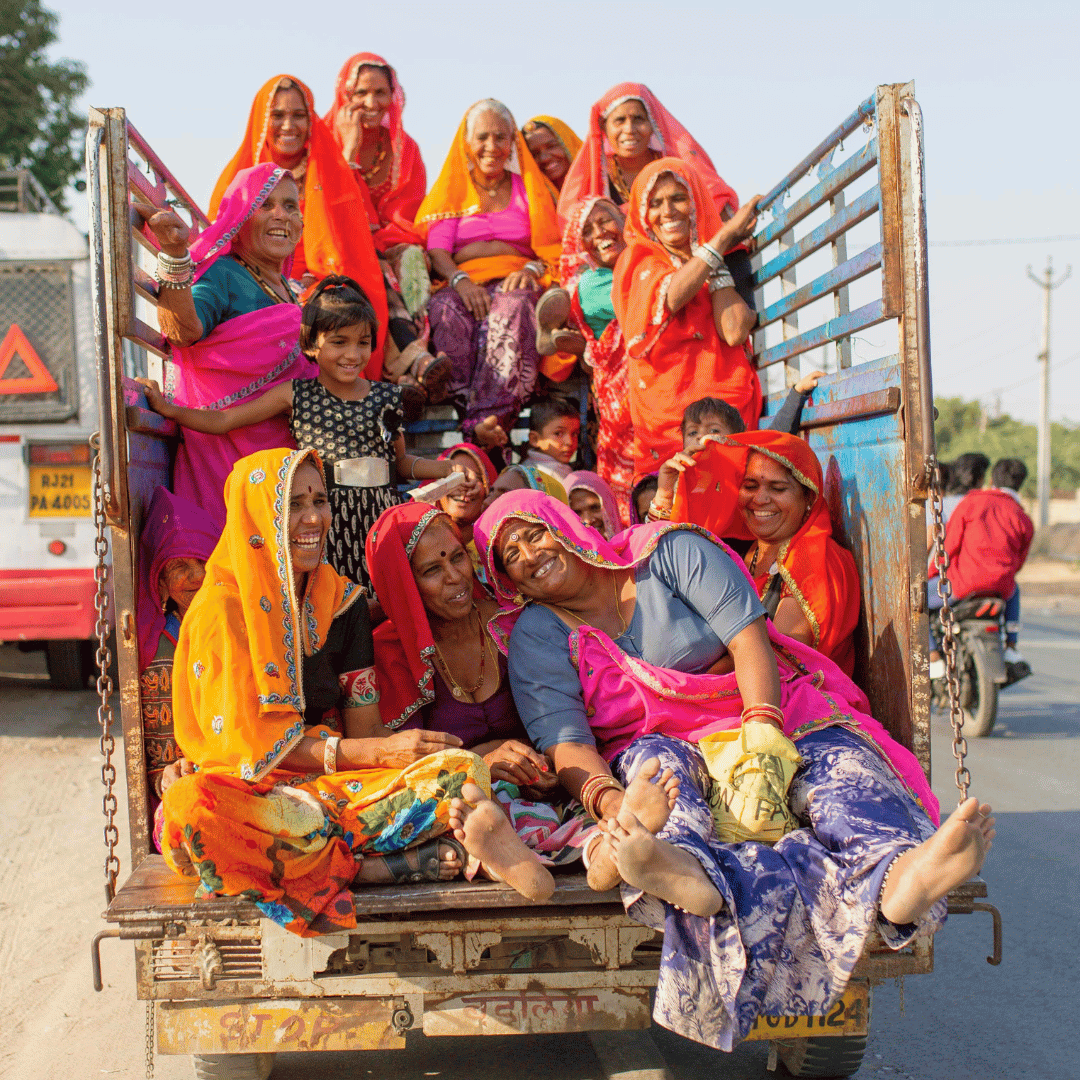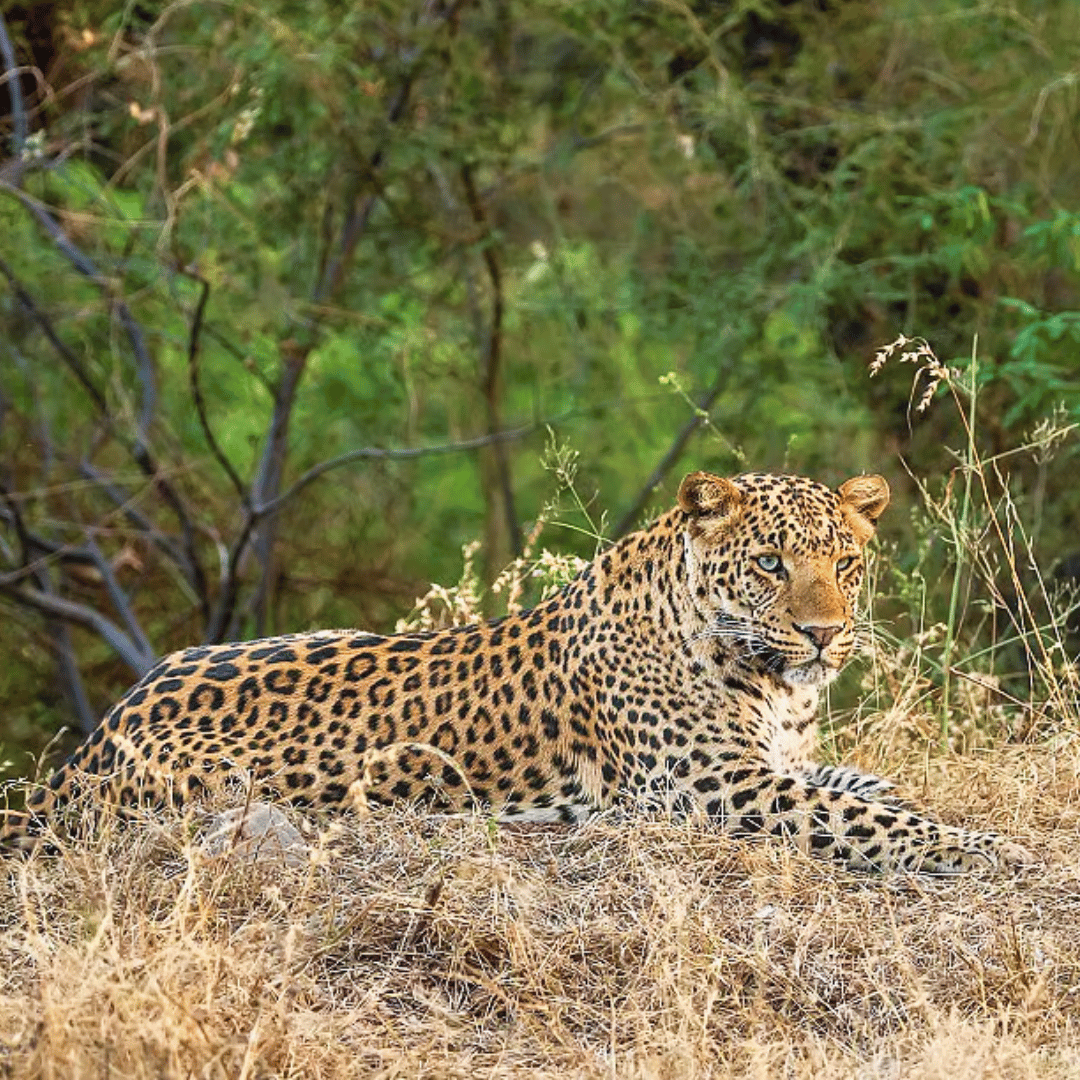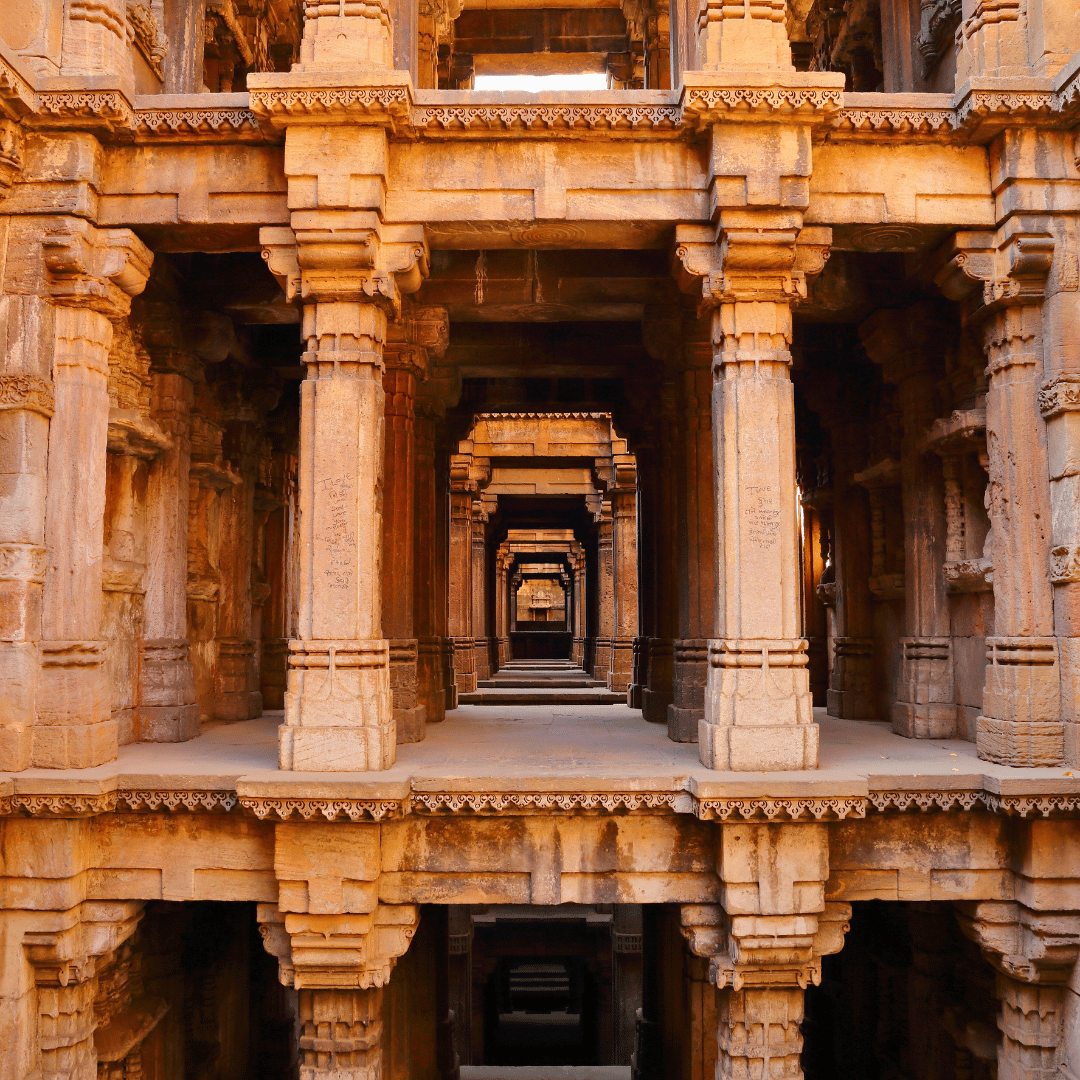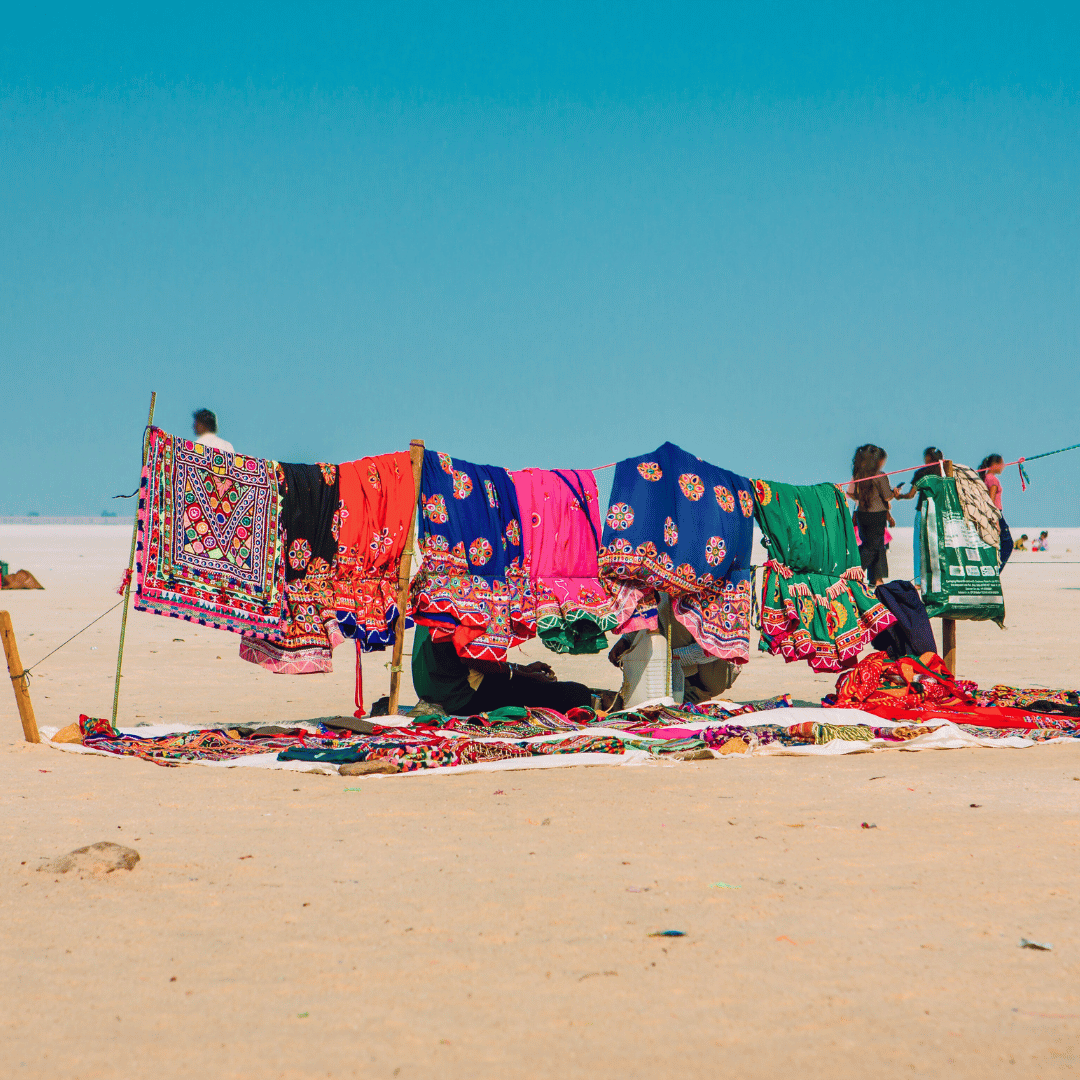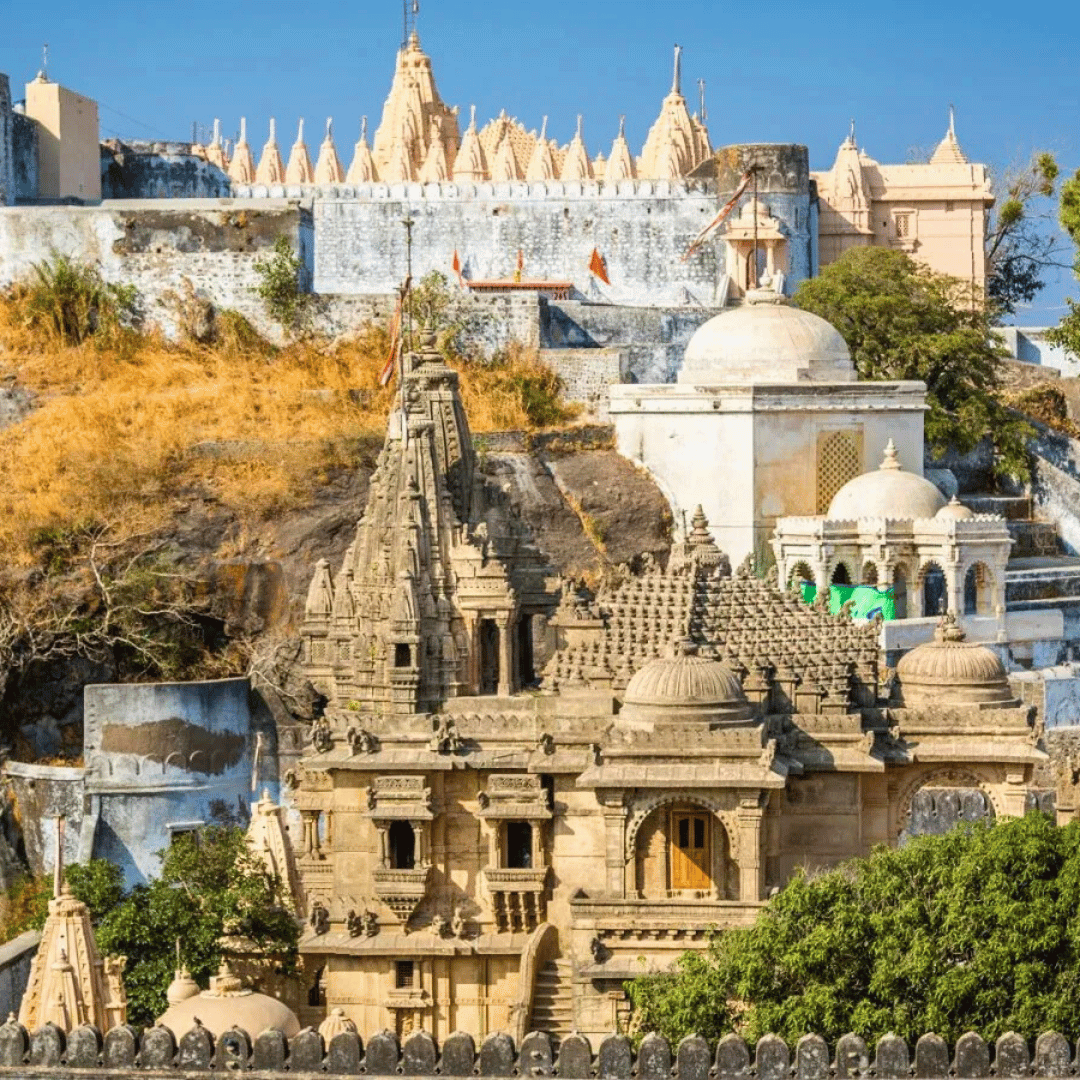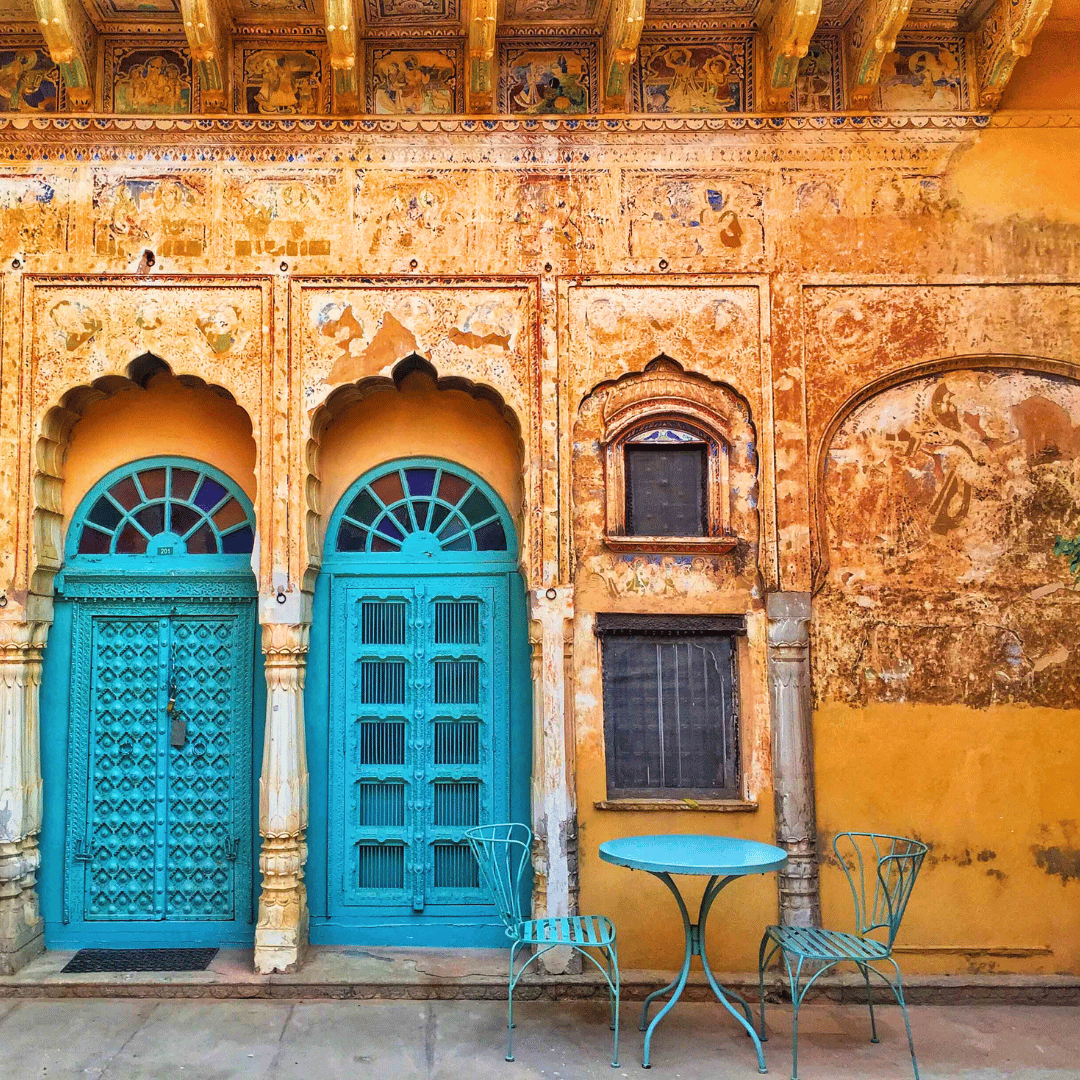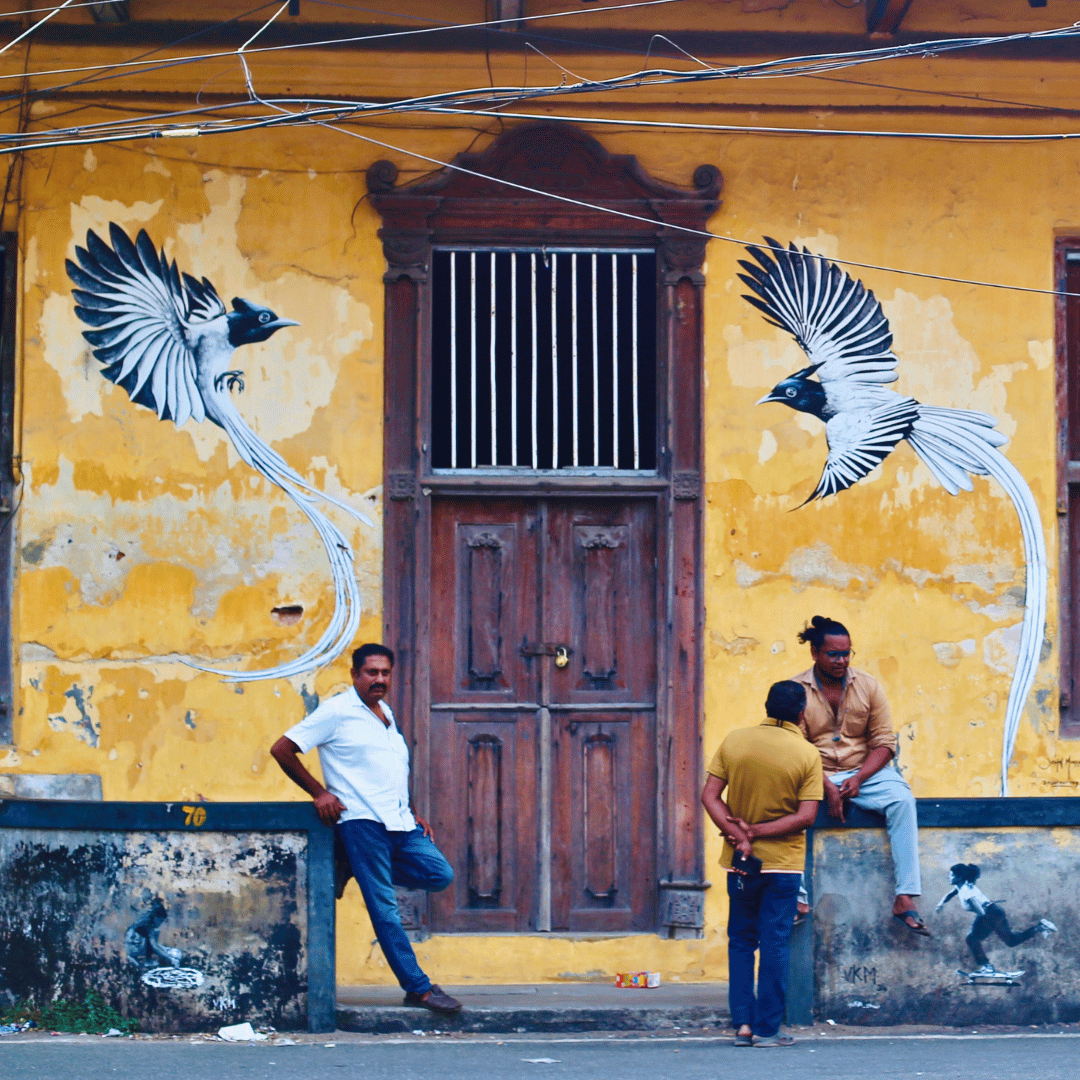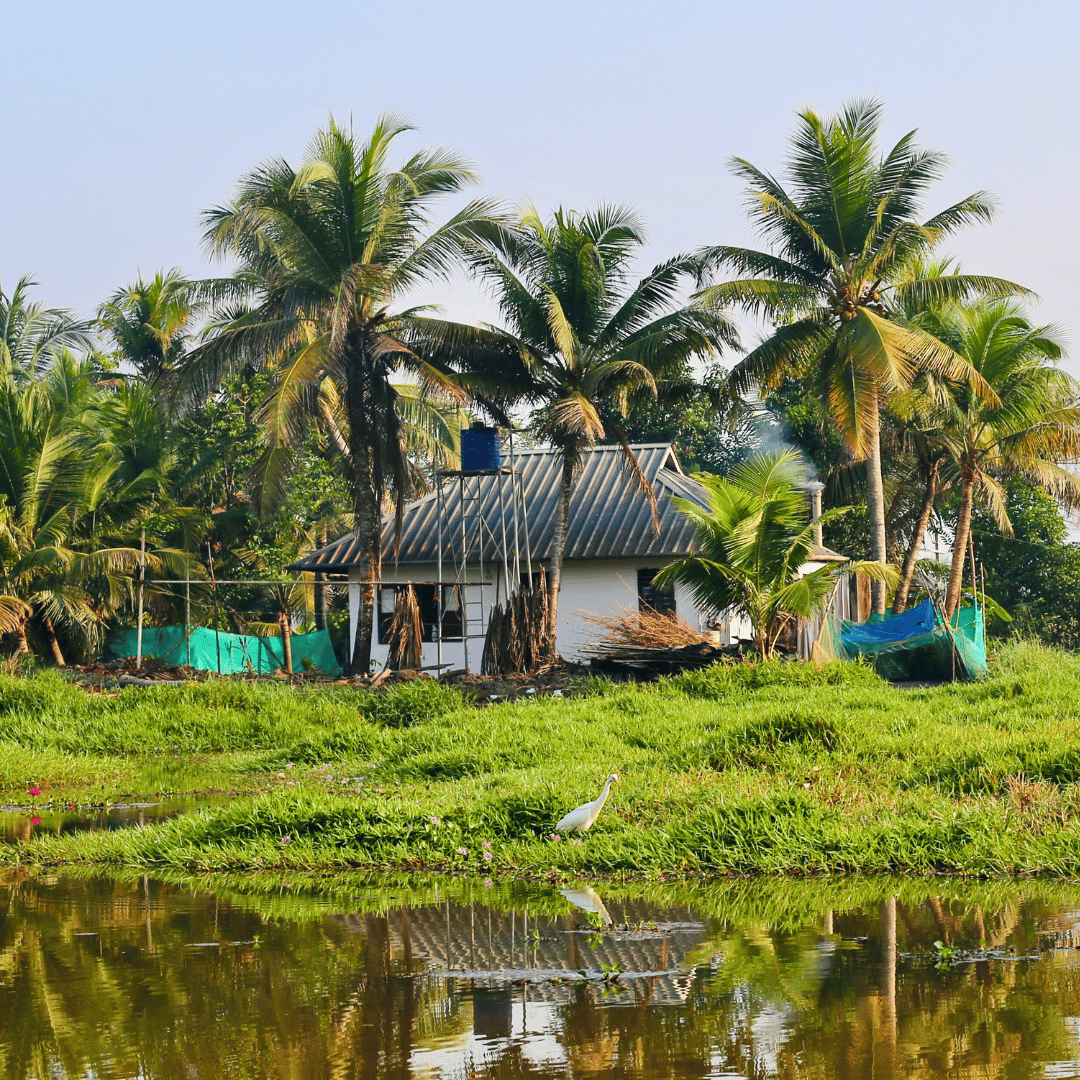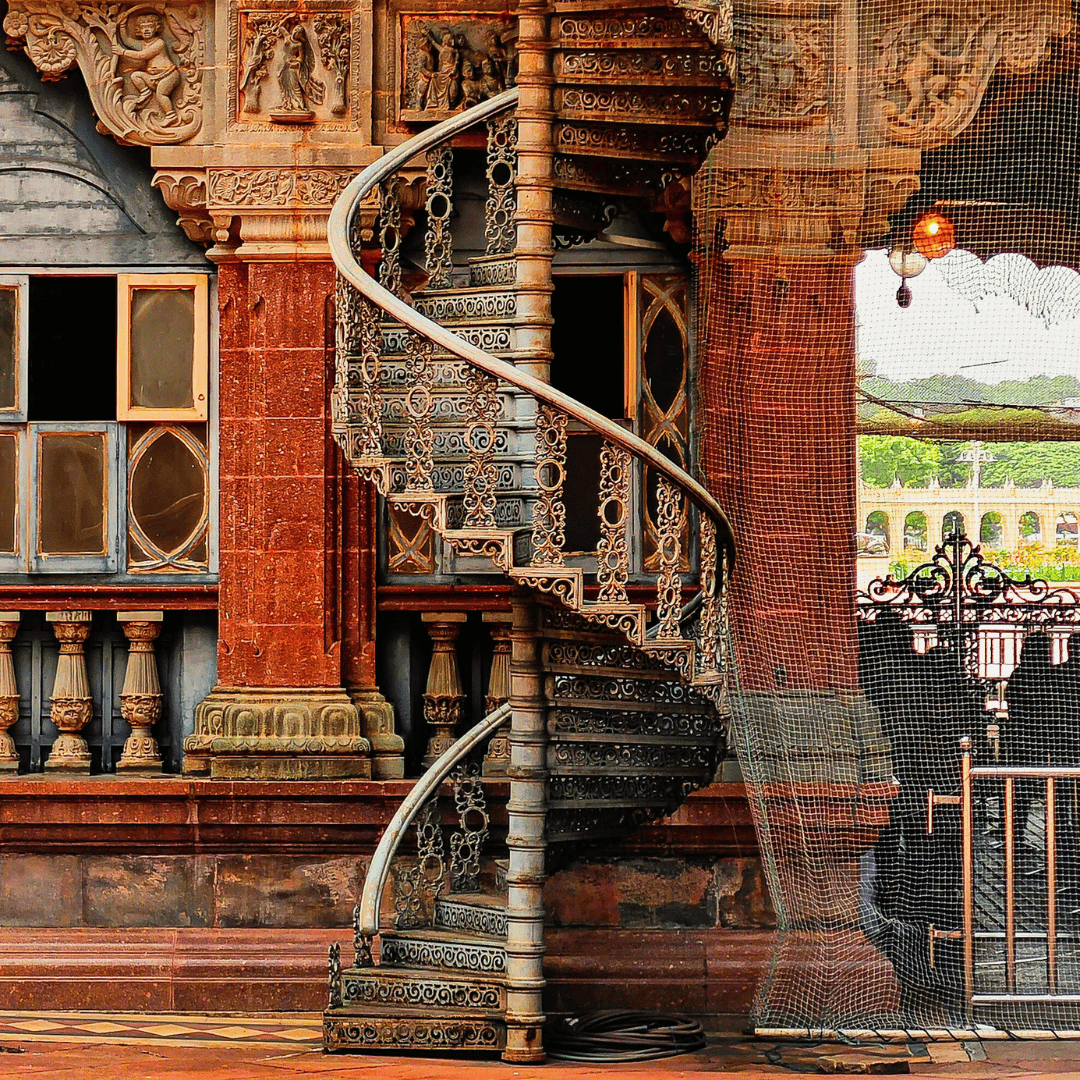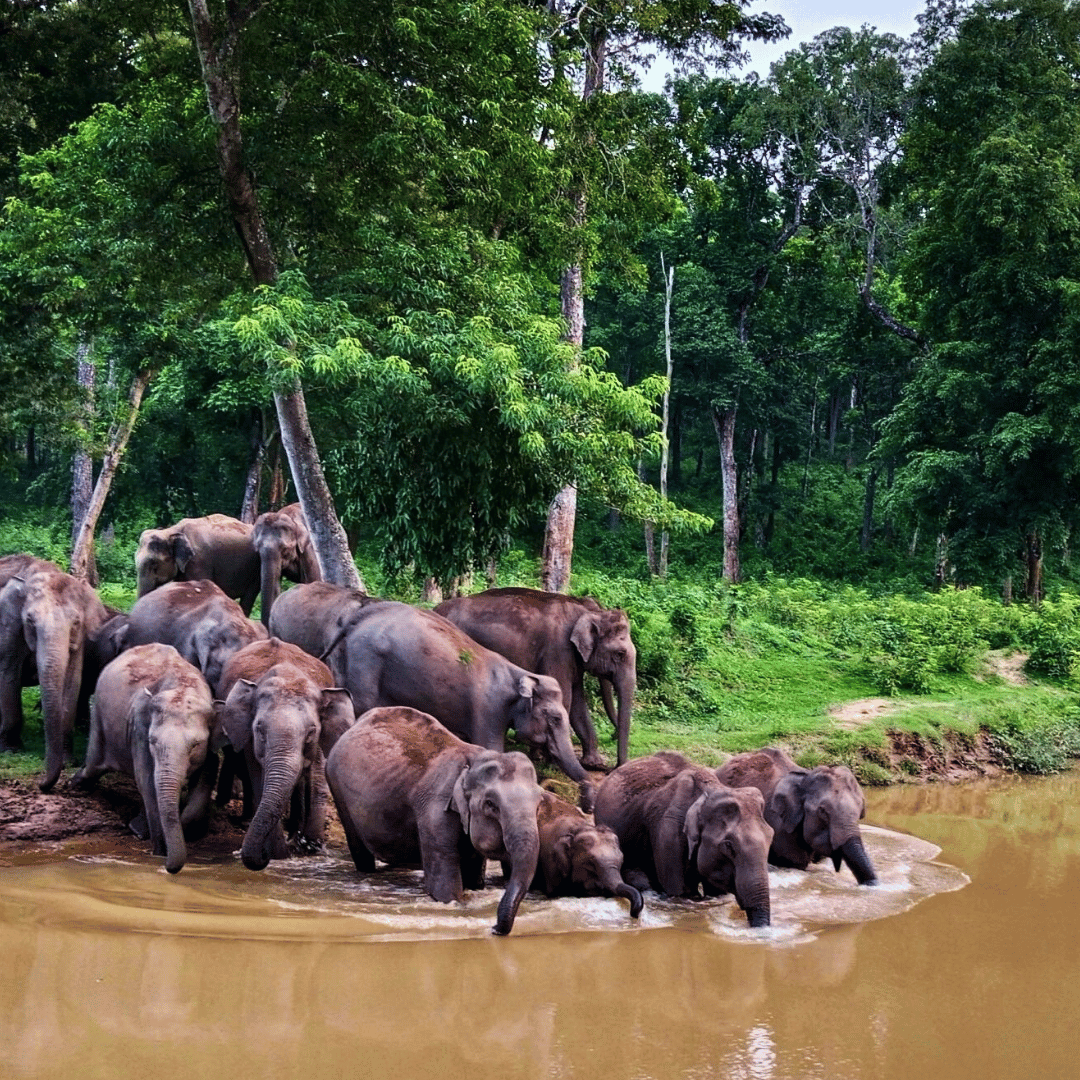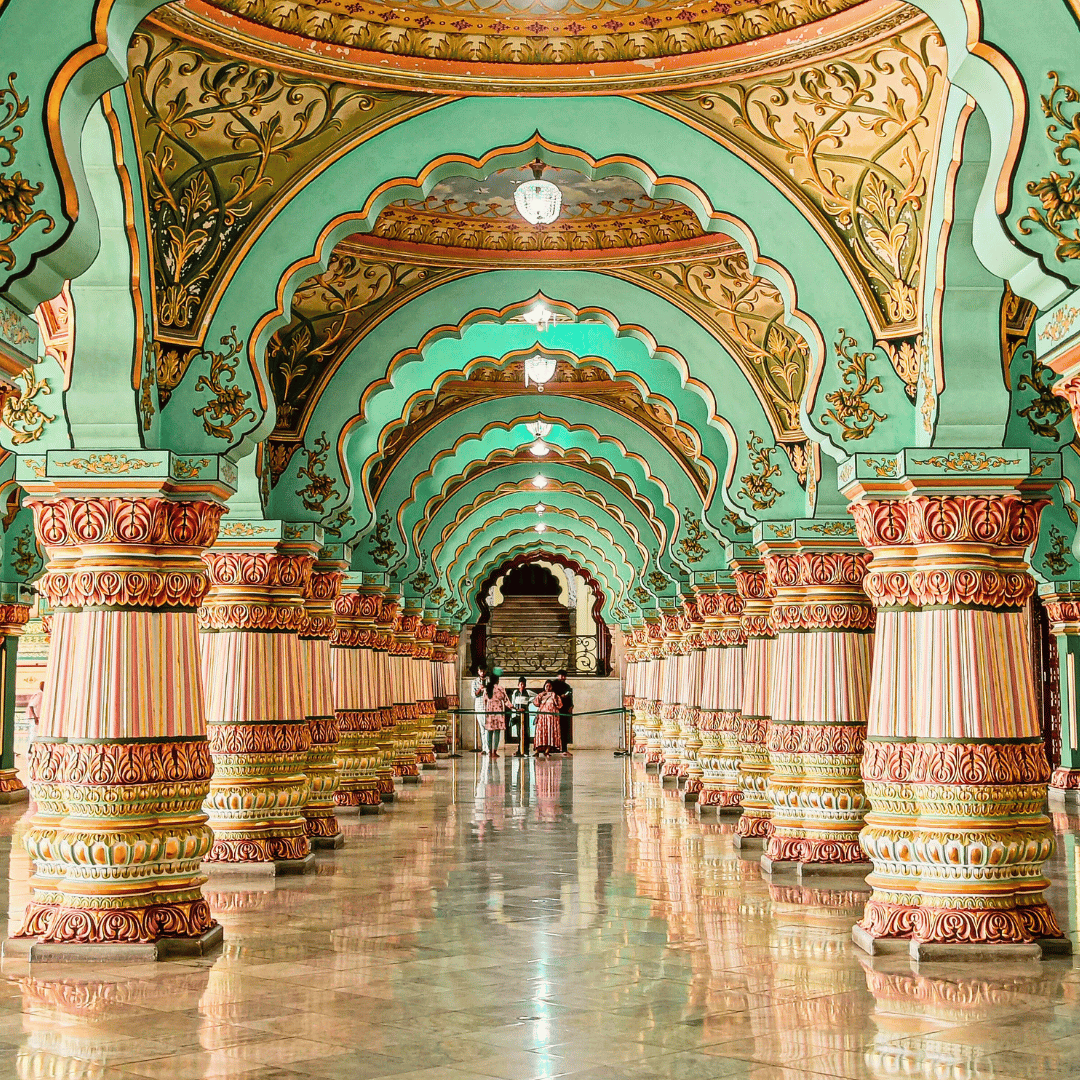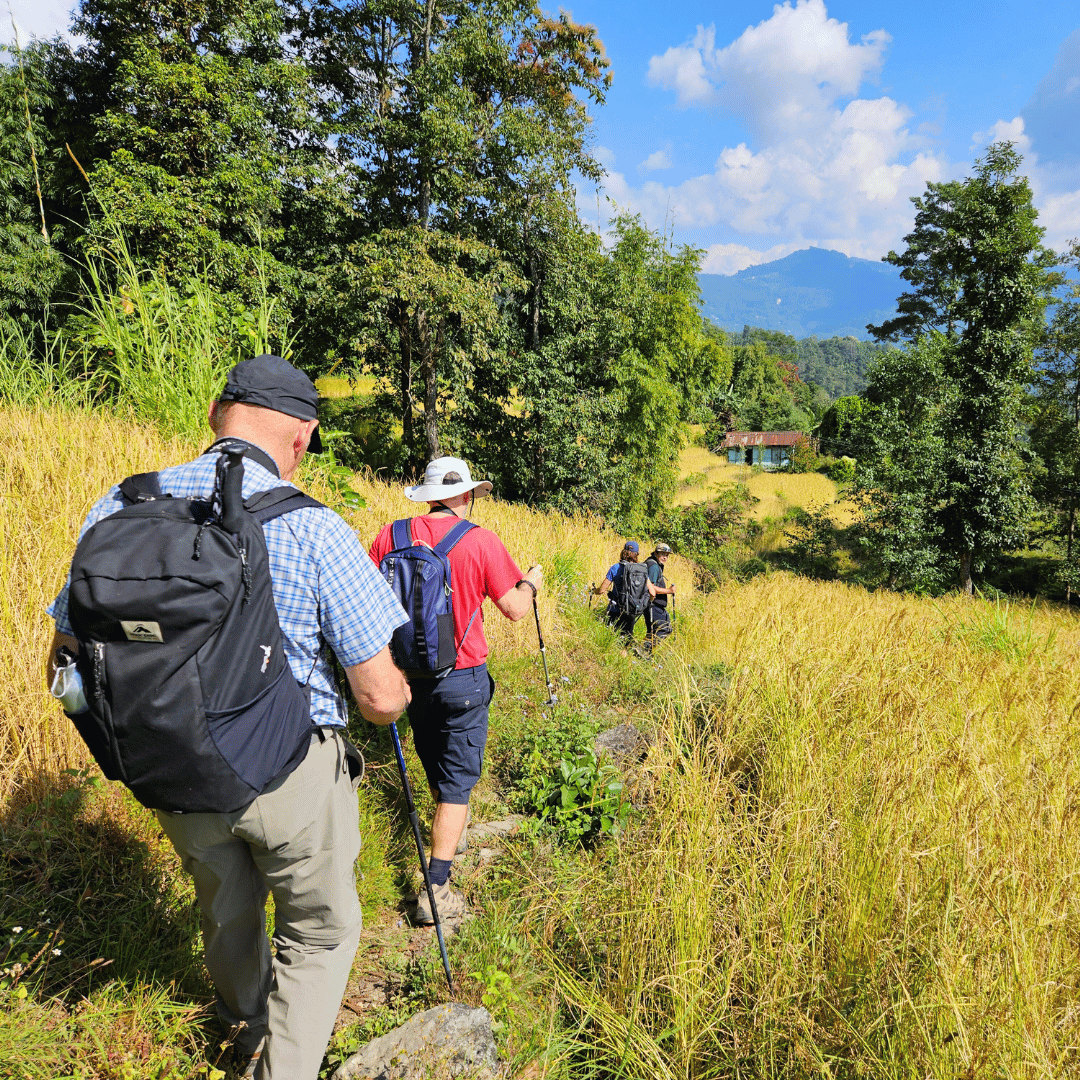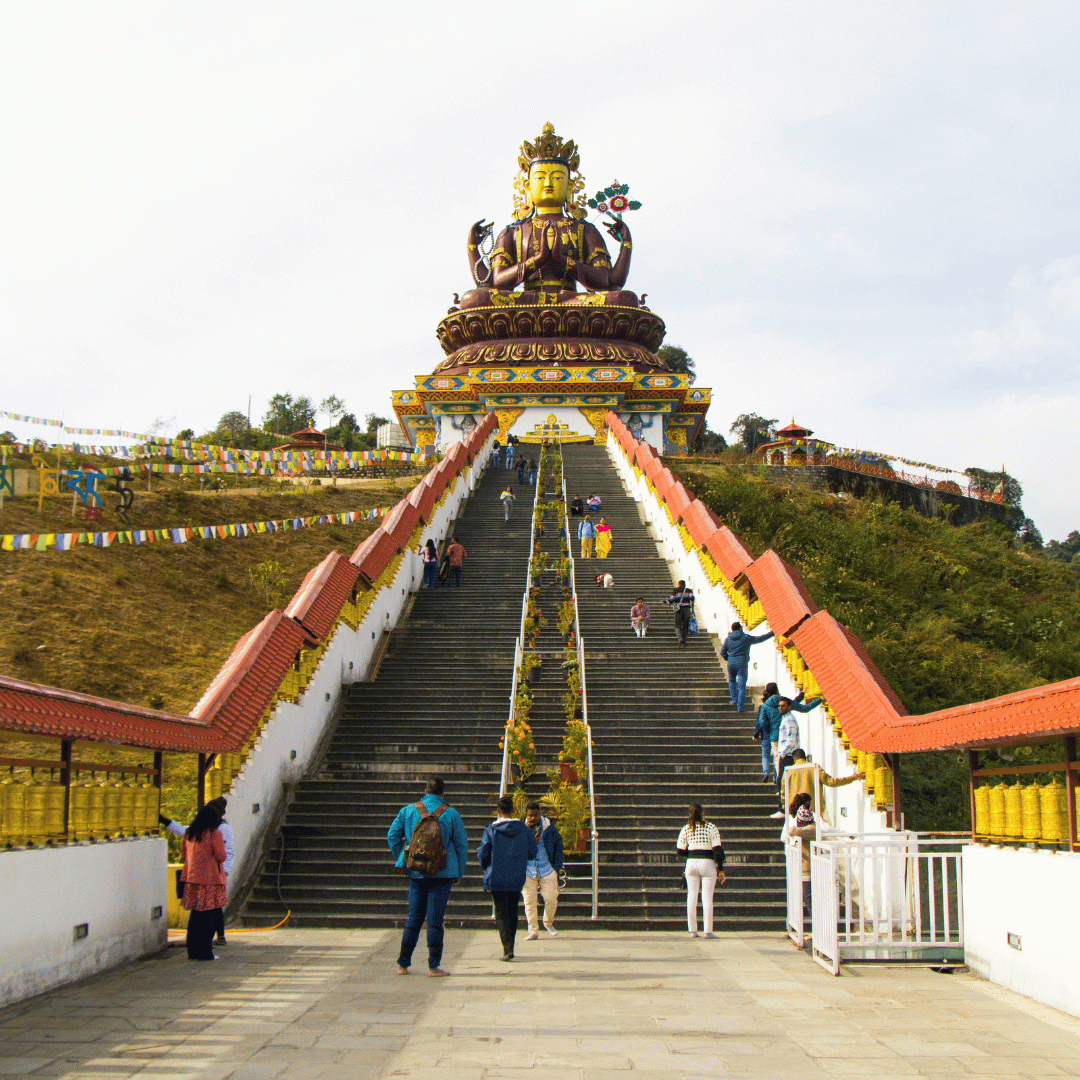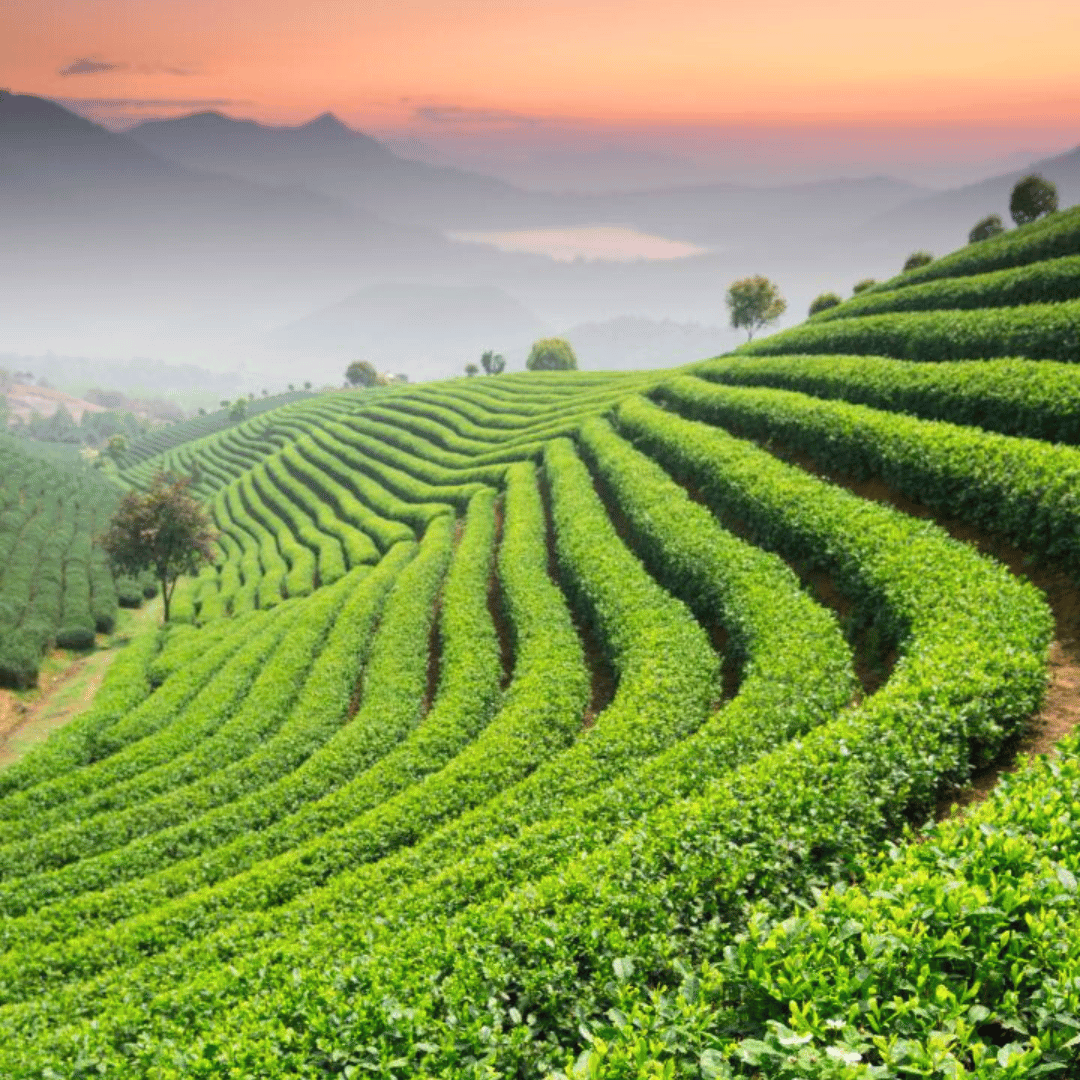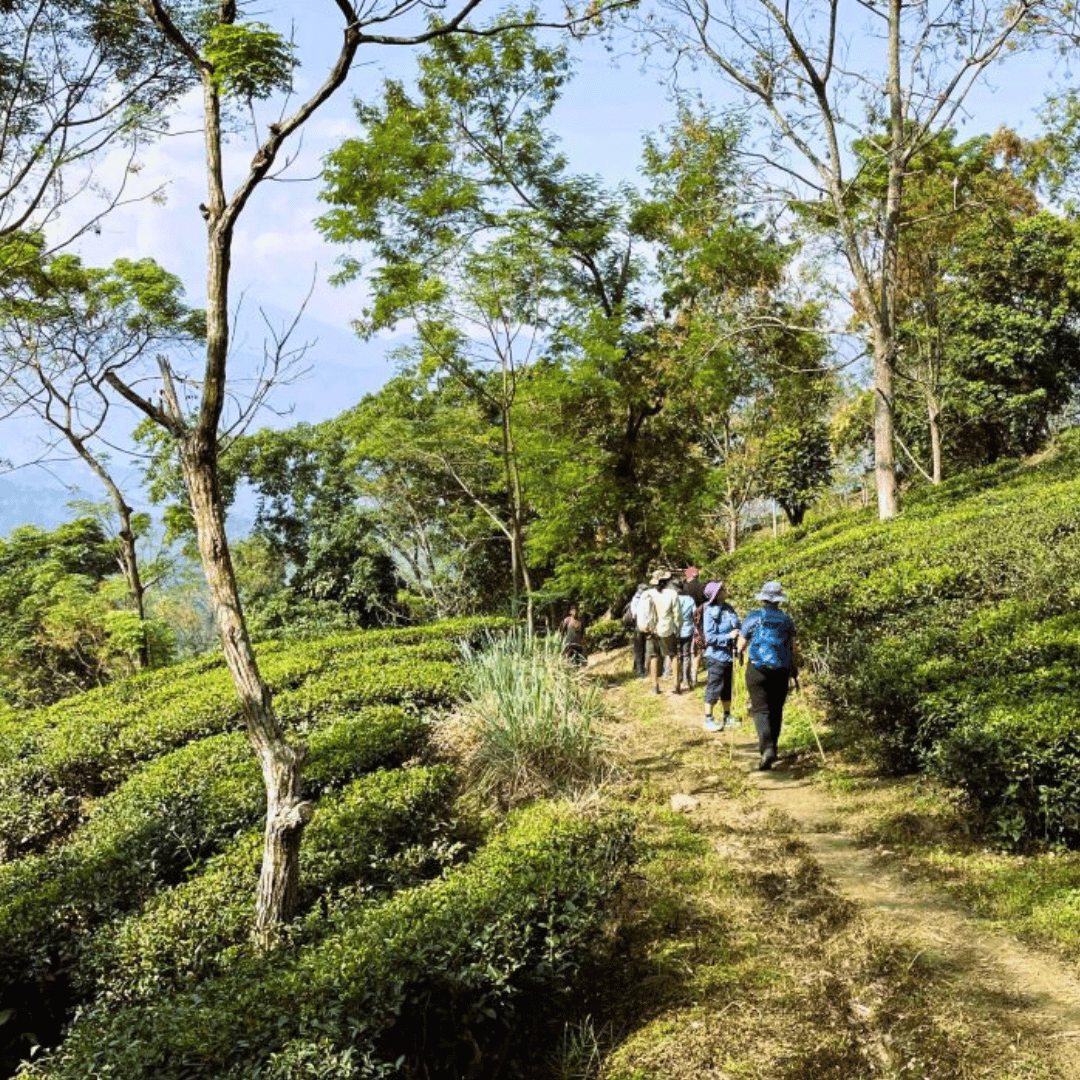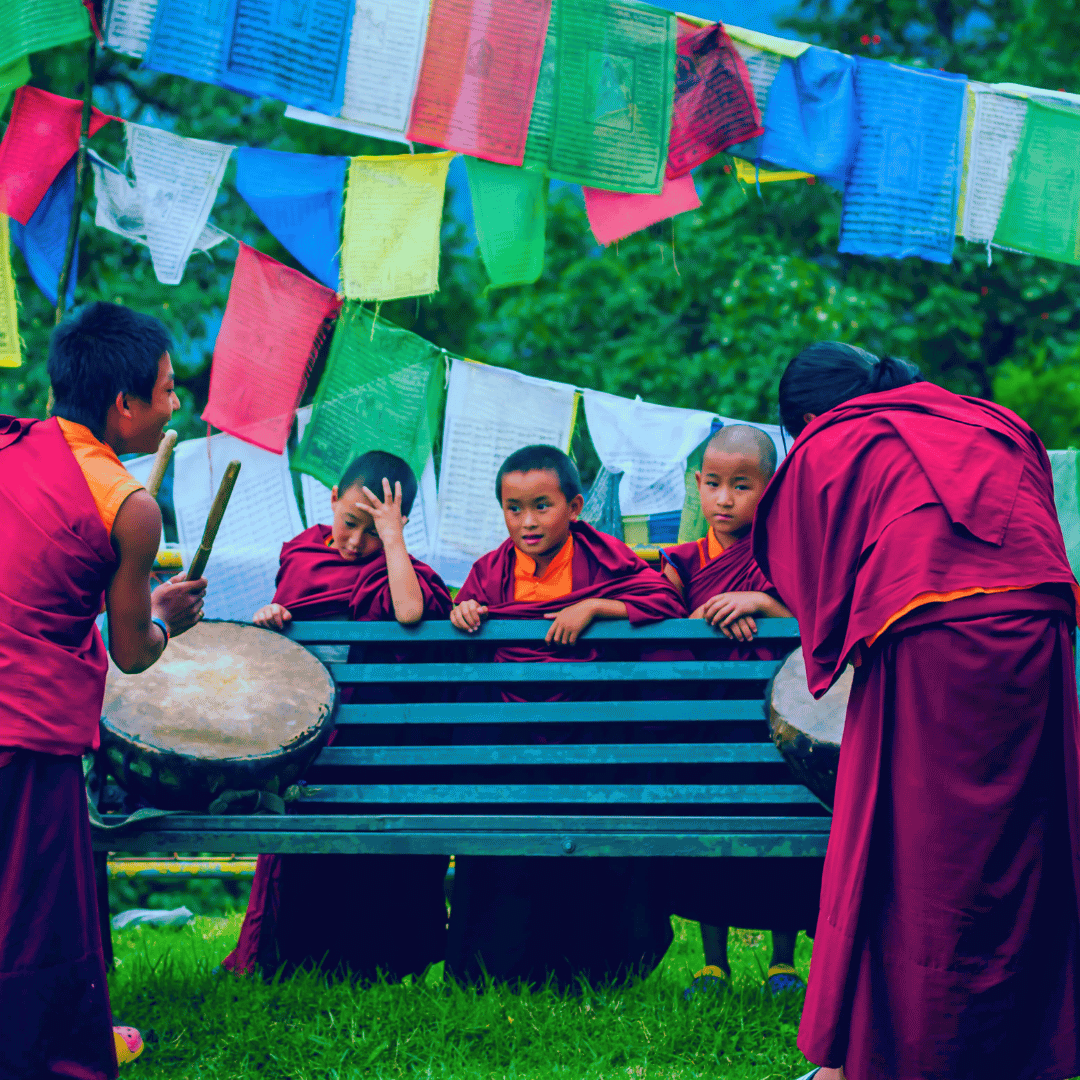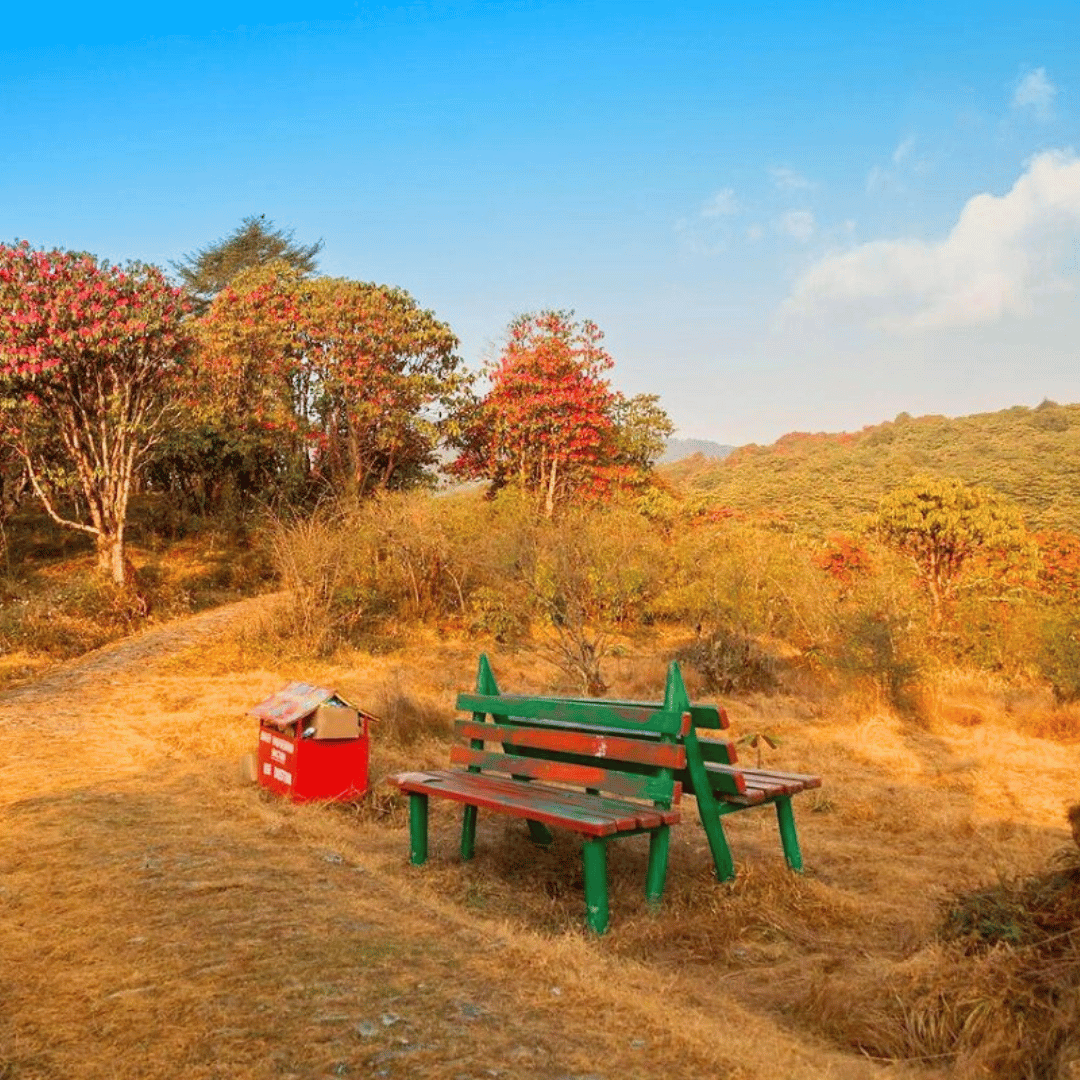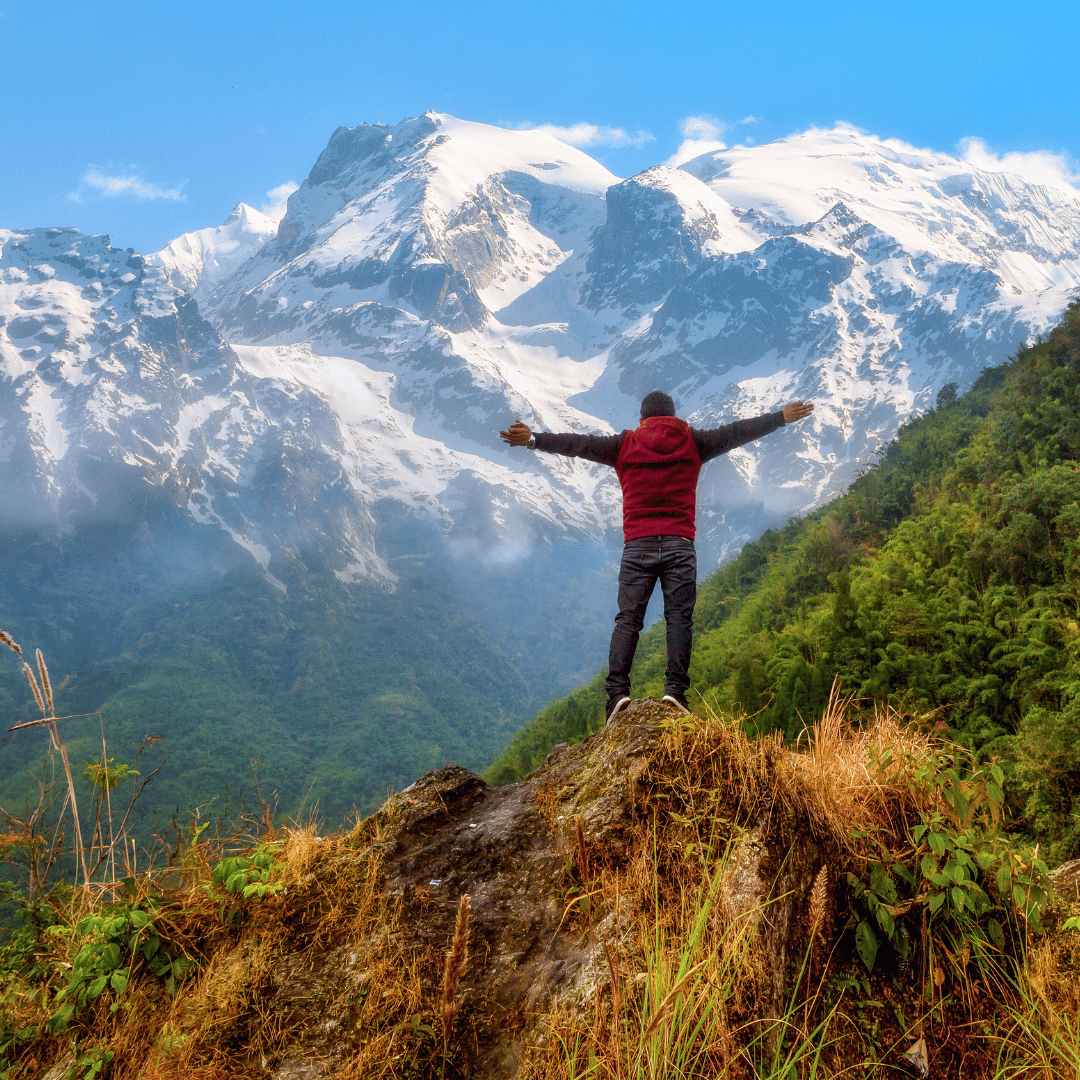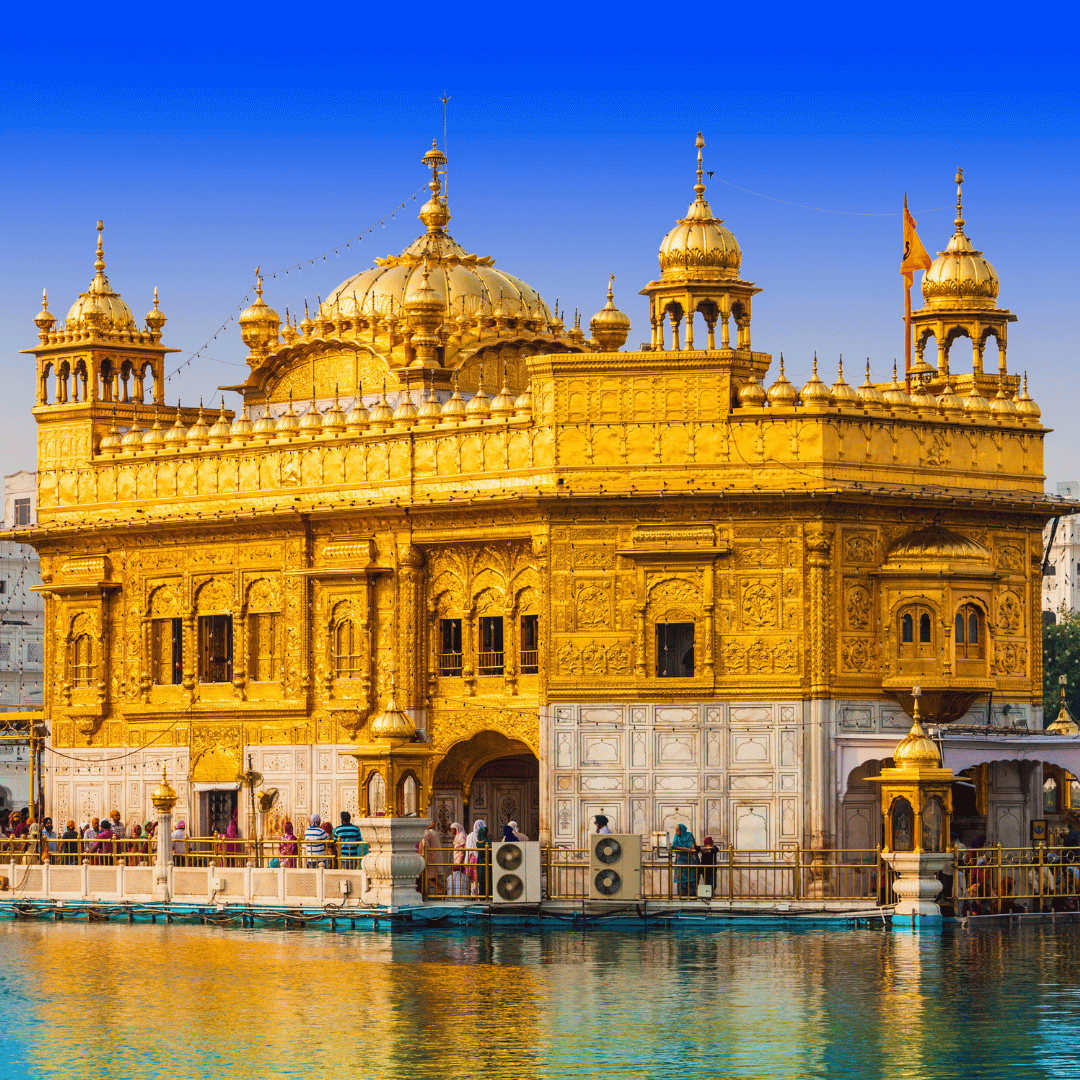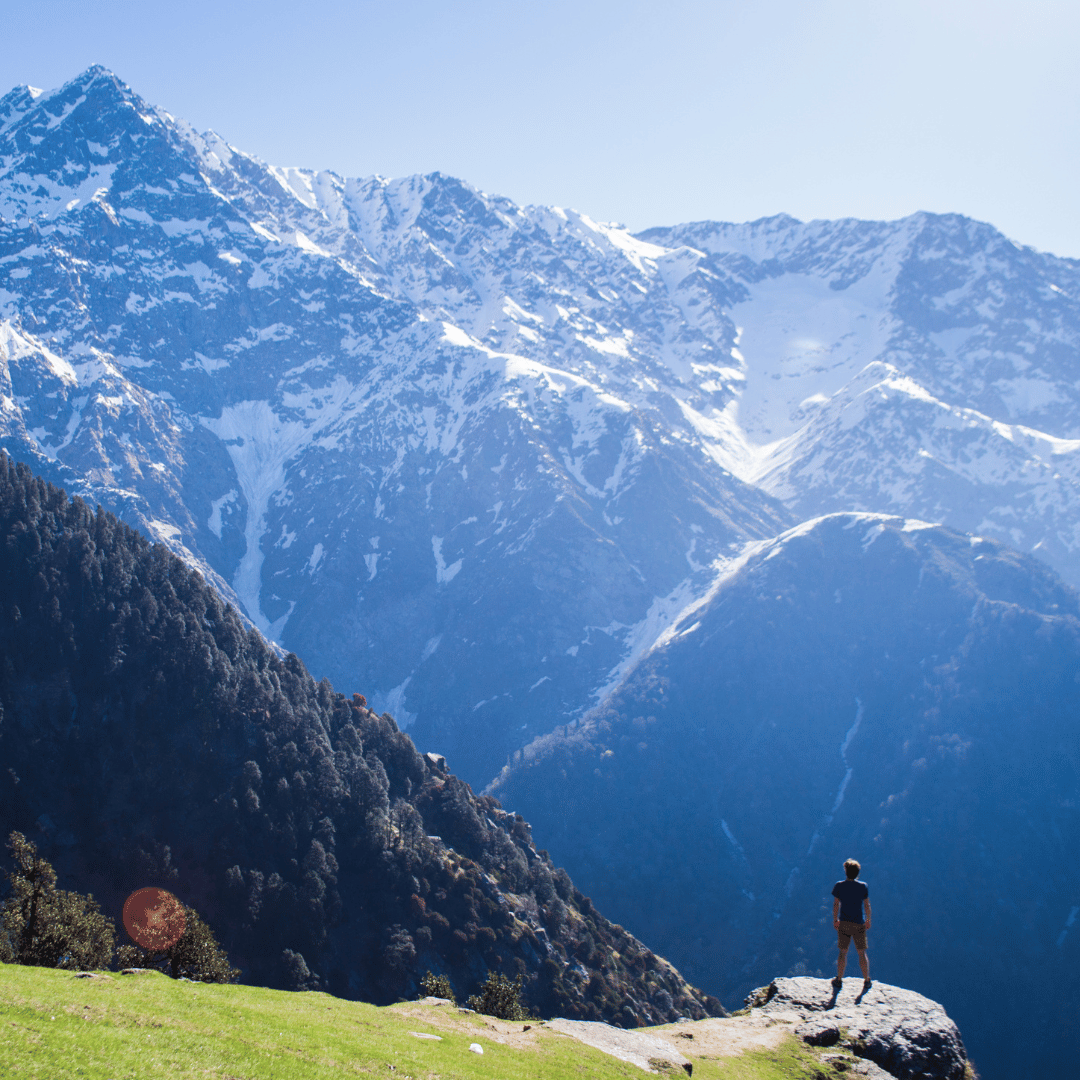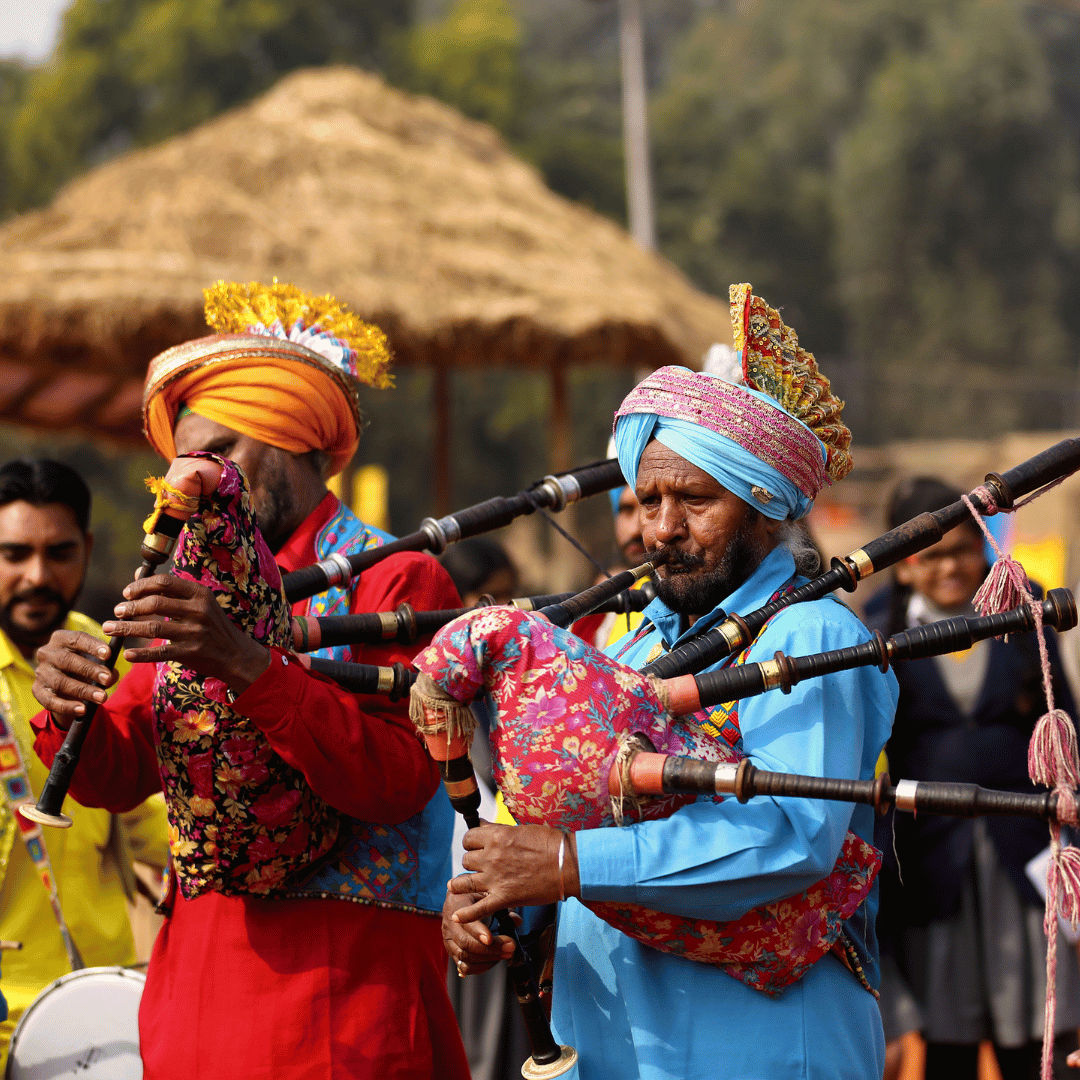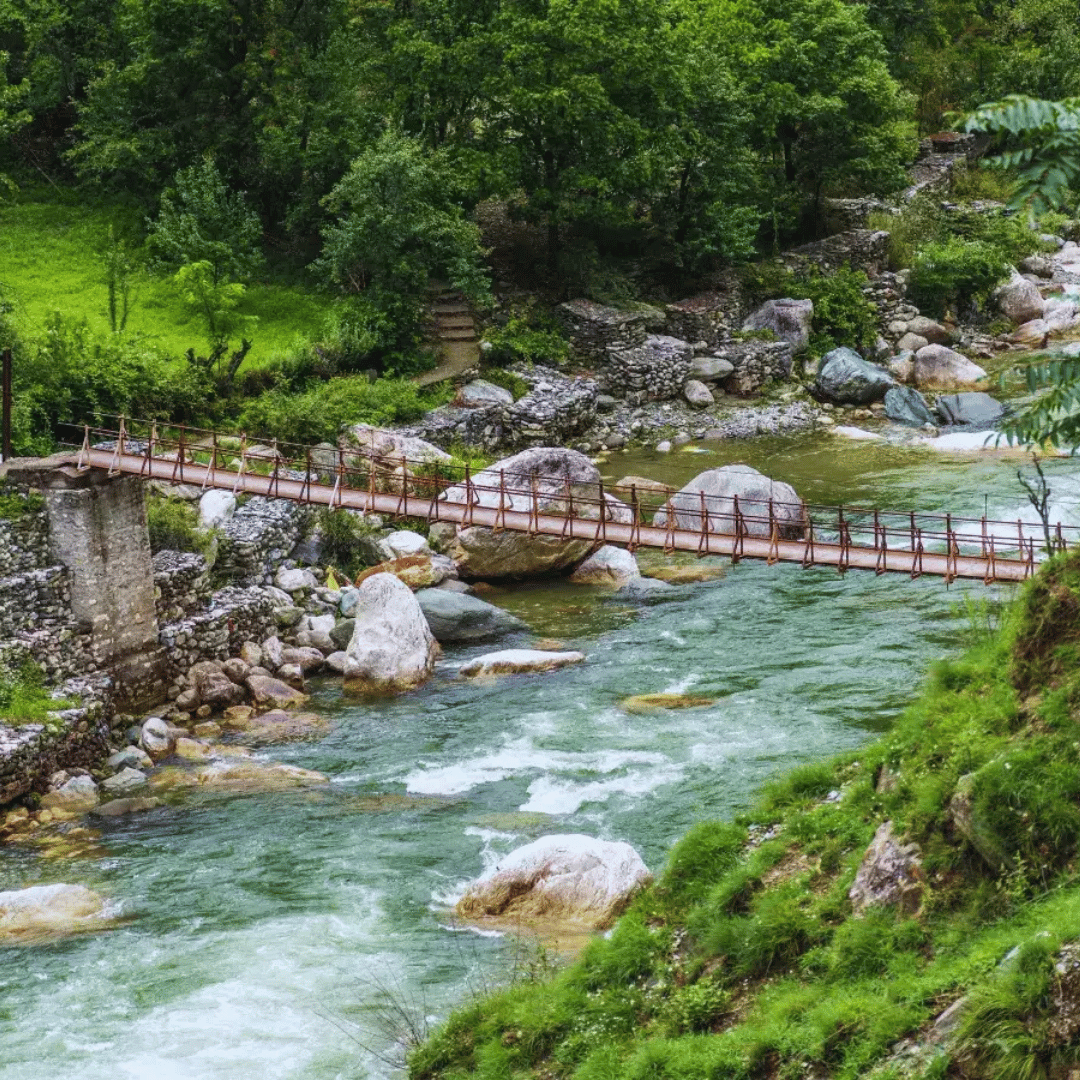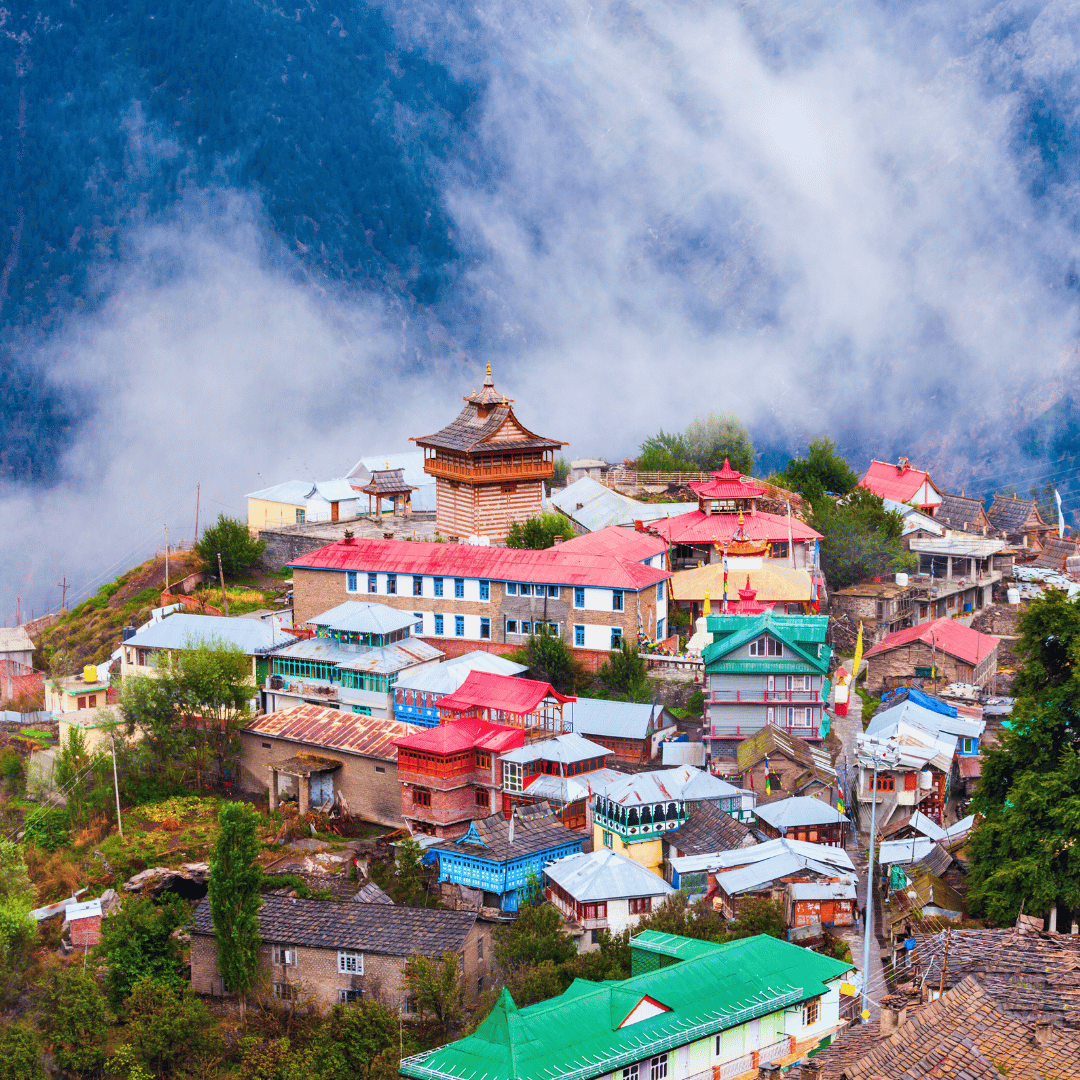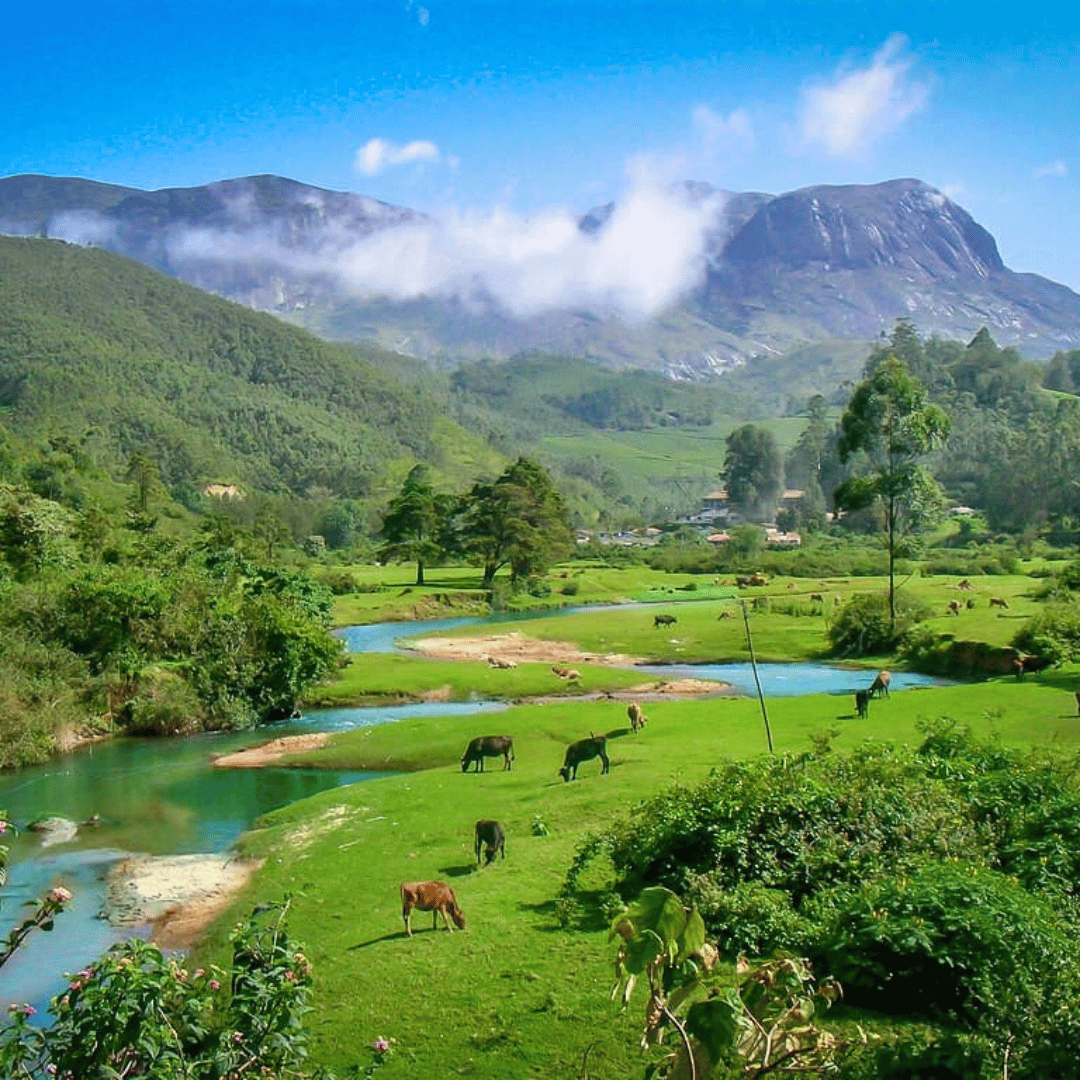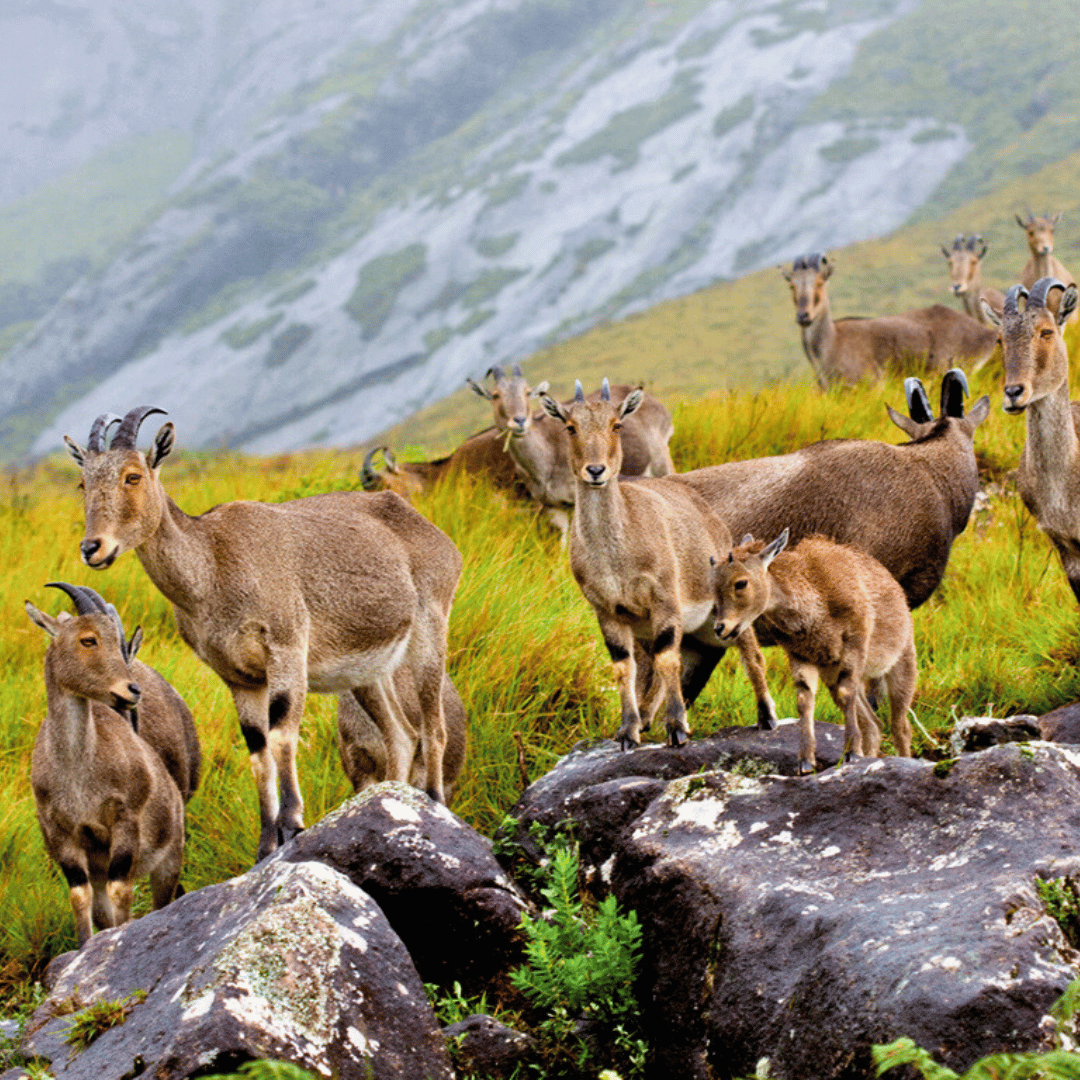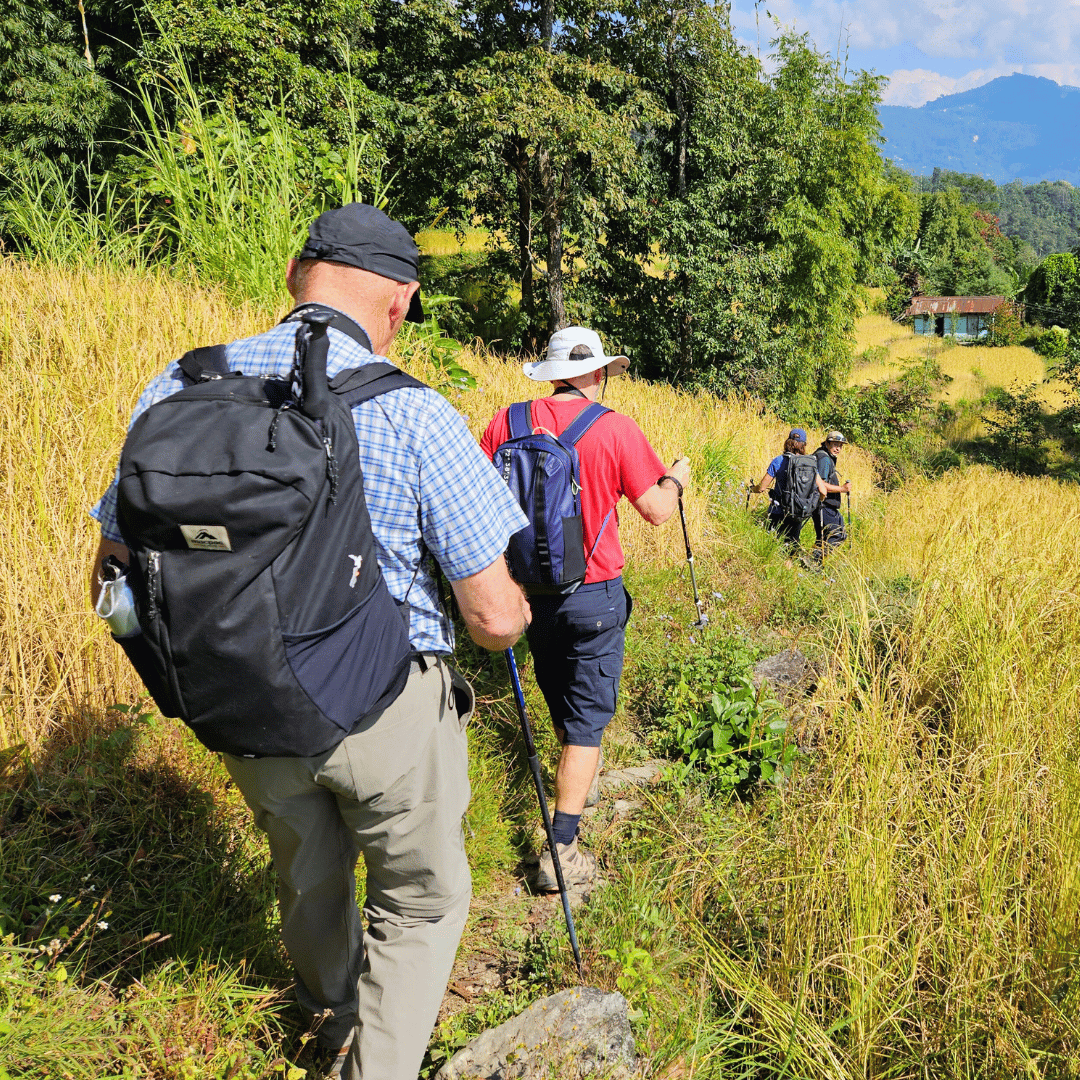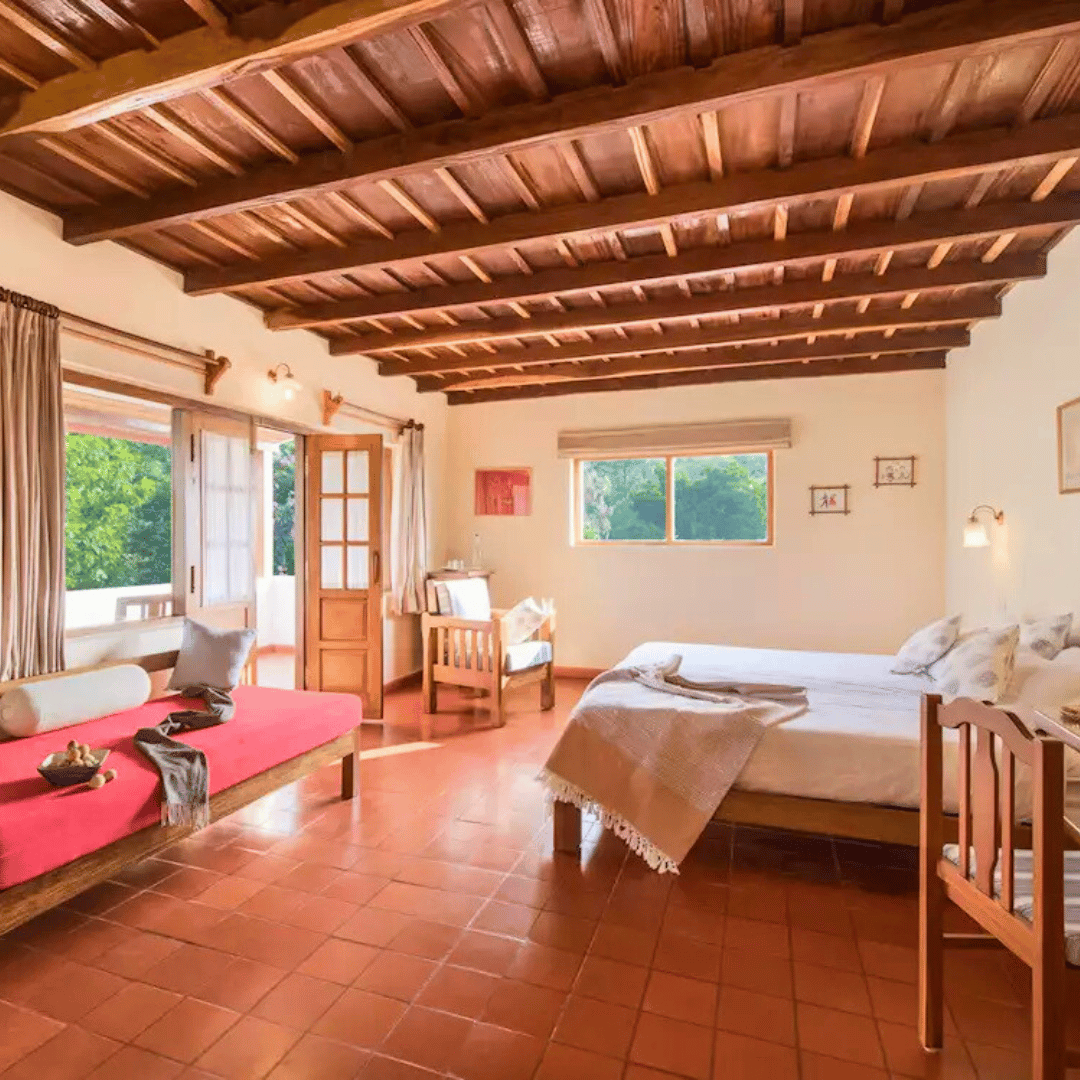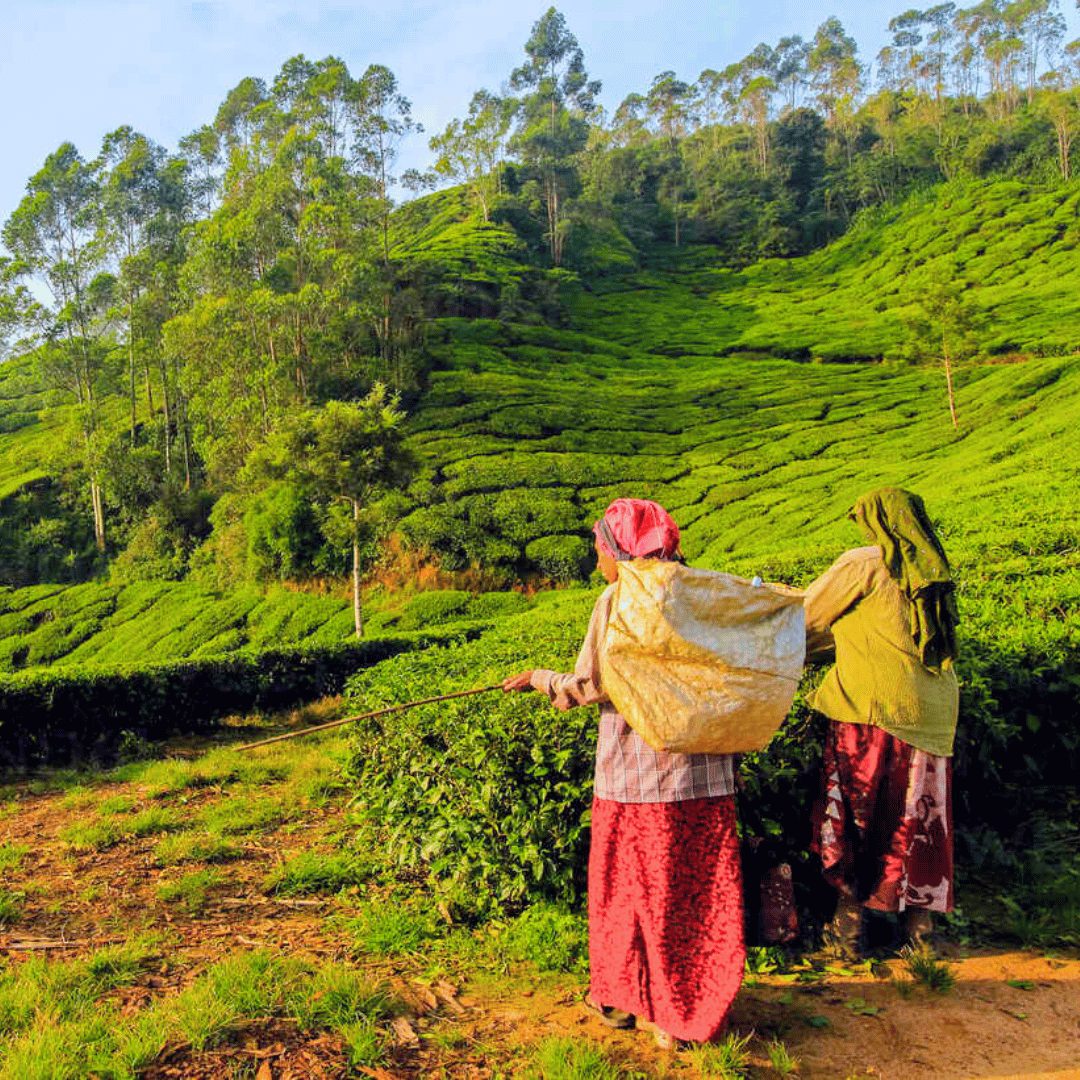Gujarat & Rajasthan Tour Itinerary
-
Welcome to India! You’ll be met on arrival in Delhi, the nation’s sprawling and energetic capital, and transferred to your hotel in a private vehicle. Home to over 22 million people, Delhi is a city of contrasts - where Mughal forts and ancient tombs sit alongside wide boulevards, colonial buildings, and the fast pace of modern Indian life. As the gateway to your journey through Rajasthan and Gujarat, Delhi provides a fitting first glimpse into the scale, diversity and dynamism of the country.
Once you’ve checked in at your hotel, the rest of the day is yours to spend as you wish. You may prefer to take it easy after your flight - rest, adjust to the time difference, and enjoy the comfort of your hotel. Or, if you’re feeling more energetic, you might like to take a short stroll nearby, get your first taste of Indian cuisine at a local restaurant, or explore a local market. For those with time and interest, we can suggest optional guided walks or short car tours to introduce you to some of the city’s historic landmarks or lesser-known pockets of interest.
Whether you choose to explore or simply relax, today is about easing into the journey ahead. Tomorrow, you'll leave the capital behind and head into Rajasthan’s quieter backroads, beginning with the richly painted havelis and rural charm of the Shekhawati region.
-
This morning, depart Delhi for the 5-hour drive to Nawalgarh, located in the heart of the Shekhawati region of Rajasthan. Alternatively, you may choose to travel part of the way by train, depending on your preference and schedule. As you leave behind the busy capital, the landscape begins to open up into arid plains and small rural settlements, giving you your first taste of the quieter side of northern India.
The Shekhawati region is often described as an ‘open-air art gallery’, renowned for its elaborate havelis - grand homes built by wealthy merchant families in the 18th and 19th centuries. These mansions are adorned with intricate frescoes that depict everything from mythology and folklore to British colonial figures and early motorcars. Though many of the buildings are faded with time, their artistry and architectural detail remain striking.
One of the accommodation options in Nawalgarh is Roop Niwas Kothi, a heritage property with a rich past. Originally built in 1737 by Thakur Nawal Singhji - a warrior and statesman - the building served as a country retreat for the royal family, primarily used for their prized horses. Set amid spacious grounds and surrounded by trees and gardens, it provided a peaceful escape from the town.
In 1928, the property was carefully refurbished, maintaining its original charm while adding modest comforts. It was later opened to guests in 1981 and continues to be run as a family-operated heritage hotel. Staying here offers more than just a place to rest - it’s a chance to step into Rajasthan’s regal past. With its wide verandahs, antique furnishings, and quiet corners, Roop Niwas Kothi invites you to slow down and enjoy the understated elegance of a bygone era.
-
Nawalgarh is widely regarded as the artistic heart of the Shekhawati region, and it’s easy to see why. This small Rajasthani town is home to an extraordinary collection of havelis - opulent mansions built by Marwari merchants between the 18th and early 20th centuries, when the region thrived as a hub for trade and commerce. These buildings were not only homes but grand statements of wealth and status, their facades covered in exquisite frescoes that remain among the finest in India.
Many of these havelis are over 300 years old, and the artwork that adorns them is both intricate and imaginative. The murals span a range of themes, from traditional Hindu epics such as the Ramayana and Mahabharata to scenes of village life, royal processions, British officials, steam trains, gramophones, and the early days of flight - offering a fascinating visual record of changing times. Though some buildings have aged and faded, the artistry remains vibrant and rich with detail.
After a leisurely breakfast, set off on a guided walking tour of Nawalgarh’s historic quarters with a local expert who will help interpret the stories told through these painted walls. You’ll explore a curated selection of the town’s most striking havelis - some lovingly restored, others atmospheric in their gentle decay. Your guide will also take you to the nearby towns of Mukundgarh and Mandawa, where the havelis differ slightly in style but are no less impressive, reflecting the individual tastes and fortunes of the families who built them.
Returning to your accommodation in the afternoon, you’re free to spend the rest of the day as you please. Roop Niwas Kothi offers a relaxed country setting and a number of optional activities. For those keen to stay active, consider a jeep safari through the surrounding farmland and desert landscapes, or a guided cycling trip through nearby villages to observe daily life at a slower pace. Camel and horse rides can also be arranged for a classic desert experience.
If a slower day is more your style, simply enjoy the property. Sit back on the verandah with a cup of chai, read under a shady tree in the garden, or take a refreshing dip in the pool. The setting, full of old-world charm and natural beauty, invites you to unwind and absorb the atmosphere of rural Rajasthan at your own pace.
-
This morning, depart Nawalgarh and travel south on a scenic 4-hour drive to Kishangarh. Along the way, you’ll stop at Sambhar Lake - India’s largest inland salt lake and an important wetland ecosystem. During the cooler months, Sambhar becomes a haven for migratory birdlife, with flamingos, pelicans, and a wide range of waterfowl arriving from as far as northern Asia. The shimmering salt flats and shallow waters create a surreal landscape, offering striking views and excellent opportunities for birdwatching and photography.
Continuing on to Kishangarh, you’ll arrive in the early afternoon and check in to the beautifully located Phool Mahal Palace, a heritage hotel steeped in character and history. The former royal residence sits on the edge of Gundalao Lake, with the imposing Kishangarh Fort rising dramatically behind it - an impressive setting that perfectly captures the faded grandeur of Rajasthan’s princely past.
The afternoon is yours to enjoy as you please. You might like to simply relax in one of the palace’s elegant sitting rooms, where marble floors and vintage furniture create an atmosphere of timeless calm. Gaze out over the lake from a shaded verandah, listen to the sounds of local birdlife, or take a moment to enjoy the stillness and serenity of your surroundings.
If you're feeling more energetic, head out for a wander through the town. Kishangarh is known for its rich cultural heritage and its distinctive school of miniature painting, which flourished here in the 18th century. The town’s narrow streets are lined with old buildings, many with carved facades and faded murals, and the bustling local market is full of colour, textiles, spices and everyday activity. It’s a great place to get a feel for life in a smaller Rajasthani town, and friendly locals often enjoy a chat or smile with curious visitors.
-
Spend the day exploring the grand Kishangarh Fort, a remarkable example of Rajput and Mughal architecture dating back to 1649. Built by Maharaja Roop Singh, the fort was designed not only as a stronghold but also as a symbol of power and prestige. Its sturdy, turreted walls and defensive design include battlements, jails, granaries, armouries and even foundries - offering insight into the fort’s multifaceted role in both warfare and daily royal life.
Surrounded by a wide, deep moat and strategically positioned for defence, Kishangarh Fort is notable for never having been conquered - an impressive feat in the tumultuous history of Rajasthan’s princely states. As you explore its stone corridors and expansive courtyards, you’ll get a sense of the fort’s resilience and the lives once lived within its walls.
Beyond its military significance, the fort also played a pivotal role in the cultural and artistic life of the region. Kishangarh is celebrated for its distinctive school of miniature painting, which flourished in the 18th century under royal patronage. These finely detailed works are known for their romantic themes, rich colours, and elegant depictions of courtly life. Many examples are on display within the fort’s galleries, offering a glimpse into the creative legacy of this princely state.
The afternoon is free for you to enjoy at your own pace. The tranquil setting of Phool Mahal Palace and its lakeside position make it a wonderful place for birdwatching - particularly in the cooler hours, when the lake is most active with local and migratory species.
Other activities available include yoga sessions in the garden, cycling through nearby villages, guided nature walks or a relaxed picnic by the lake.
-
This morning, you’ll be transferred to the railway station to board your train to Jawai Bandh, a journey of around five hours. Travelling by train in India is a quintessential experience - an opportunity to watch the landscape unfold from your window as you leave the towns and cities behind and venture into more remote parts of Rajasthan.
Upon arrival at Jawai Bandh, you’ll be met and driven to Bera, a small village nestled in the rocky terrain of the Aravalli hills. The area is dotted with lakes, scrubland and granite outcrops, creating a distinctive landscape that feels quite different from other parts of Rajasthan. Though quiet and unassuming at first glance, Bera has become known for its thriving population of wild leopards, which roam freely among the hills.
Your stay in Bera will be at Castle Bera, a heritage property with a character all its own. Once the private residence of the local royal family, the castle has opened just four of its tastefully restored rooms to guests, offering an intimate and personalised experience. The rooms are spacious and thoughtfully decorated, reflecting a blend of tradition and comfort. With only a handful of guests at any time, you’re likely to have the place almost to yourself, creating a relaxed, homely atmosphere that feels far removed from the busier parts of the state. The castle’s host, a member of the local nobility, takes great pride in welcoming guests and sharing stories of the region’s history and wildlife.
-
Start the day with an early morning jeep safari through the rugged landscape surrounding Bera, one of the few places in India where you have an excellent chance - almost a certainty - of spotting leopards in the wild, outside a national park. These elusive big cats roam freely among the granite hills and rocky outcrops, and the local trackers know the terrain intimately, greatly increasing your chances of a sighting.
As the sun rises and the light softens across the scrubland, keep an eye out not only for leopards but also for the area’s diverse birdlife. Jawai is a haven for birdwatchers, with over 170 species recorded, including flamingos, egrets, cranes, and kingfishers. With luck, you might also spot a crocodile sunning itself along the edge of a waterhole.
You’ll stop mid-morning at Jawai Dam for a cup of tea - an atmospheric spot where the still waters reflect the sky and surrounding hills, and birdlife flits along the shoreline. It's a peaceful break in the wild, perfect for soaking in the scenery before heading back.
Return to Castle Bera for a leisurely breakfast on the terrace or in the dining room, and then enjoy the rest of the day at your own pace. Relax with a book in the garden, take a nap in the comfort of your room, or have a chat with your host about the region’s wildlife, history and way of life.
In the late afternoon, set out on a guided village walk to discover more about rural life in this part of Rajasthan. You'll visit homes, meet local residents, and gain a sense of the rhythms of everyday life in Bera. The walk also includes a stop at the local temple, where you can learn about the religious practices and customs that remain central to village life. Return to Castle Bera in the early evening, where a home-cooked dinner awaits.
-
Depart Bera this morning for the drive south into Gujarat, with a journey of approximately three hours to the town of Palanpur. As you leave the rugged hills of Bera behind, the road winds through rural landscapes and small villages before reaching the foothills of the Aravalli mountain range - marking your arrival at the edge of Gujarat’s Balaram Ambaji Reserve Forest.
Your accommodation for the night is the charming Balaram Palace, a heritage property tucked away within the reserve, offering a peaceful escape surrounded by nature. Once the hunting lodge of the Lohani Nawab of Palanpur, the palace was built in the early 20th century and retains much of its regal character, with grand arches, colonial-style furnishings, and wide verandahs overlooking manicured gardens.
Set within 5 hectares of lush terraced gardens, the property is nestled at the tip of North Gujarat, near the Rajasthan border, and is ideally placed for those looking to step away from the bustle of cities and enjoy a more restful pace. The surrounding Balaram Ambaji Reserve Forest spans over 500 square kilometres and is home to a range of wildlife, including antelope, jackals and a rich variety of birds.
On arrival, check in and take the afternoon at leisure. You might like to simply relax and enjoy the peaceful setting - find a shaded spot in the garden, take in the views of the forested hills, or unwind in one of the palace’s airy sitting rooms. The calm, quiet atmosphere and green surrounds make it a perfect place to pause and recharge before continuing your journey through Gujarat.
-
Depart Palanpur this morning for the town of Dasada, a journey of around three hours, with two worthwhile stops along the way that showcase Gujarat’s rich cultural and architectural heritage.
Your first stop is at Patan, an atmospheric town that was once the capital of Gujarat. Patan is known for its beautifully carved wooden houses, centuries-old Jain temples, and quiet, winding lanes that still retain a strong sense of history. One of its most remarkable landmarks is the UNESCO-listed Rani ki Vav, or Queen’s Stepwell - a stunning 11th-century structure built as a memorial by a queen in honour of her late husband. Descend into the stepwell to admire its intricately carved sandstone walls, covered in hundreds of sculptures of gods, goddesses and mythological scenes. Once you visit, you’ll understand why it’s considered one of the finest stepwells in India.
Patan is also renowned for its patola silk saris, which are handwoven using a double-ikat technique that is both complex and time-consuming. You may have the opportunity to visit a traditional workshop to see this rare and precise craft in action, passed down through generations.
Continue your journey to Modhera, home to the magnificent Sun Temple, one of Gujarat’s finest architectural gems. Built in the 11th century by King Bhima I, the temple is dedicated to the Hindu sun god, Surya, and is beautifully positioned to capture the first rays of the rising sun. The temple features a stepped tank, assembly hall, and intricately carved sanctum, all of which reflect the craftsmanship and spiritual devotion of the time.
In the afternoon, arrive in Dasada, a small village on the edge of the Little Rann of Kutch, and check in to Rann Riders, your accommodation for the next two nights. This eco-resort has been thoughtfully built using local materials and traditional techniques inspired by the architecture of the region’s pastoral communities. The cottages resemble the circular bhungas of the Kutch region and are designed to stay cool in the heat and warm in the cooler desert nights.
Set among open farmland and wetlands, Rann Riders is more than just a place to stay - it’s a base for exploring the unique ecosystem and traditional life of this part of Gujarat. With a strong commitment to sustainability and community involvement, the resort also supports local artisans and environmental conservation.
The remainder of the afternoon is free to relax. You may wish to unwind in the gardens, take a walk through the nearby village, or simply enjoy the peaceful rural setting as you prepare for tomorrow’s adventure to the Little Rann of Kutch.
-
Today, set out on both early morning and late afternoon safaris into the extraordinary landscape of the Little Rann of Kutch. Though the terrain may appear stark and unforgiving at first glance - dry, flat expanses of salt-encrusted earth stretching to the horizon - it is, in fact, teeming with life and holds immense ecological significance.
The Little Rann is one of India’s most unique and important wildlife reserves, serving as a critical habitat for a wide range of species, particularly during the winter months when it becomes a magnet for migratory birds. Vast flocks of flamingos, pelicans, cranes, storks, ducks and waders arrive here from as far away as Siberia and Central Asia, transforming the salt flats and seasonal wetlands into a rich birding paradise. The region is also home to a number of land birds such as sandgrouse, larks, and the endangered Indian bustard, making it a rewarding destination for keen birdwatchers and nature lovers alike.
Beyond birdlife, the Little Rann of Kutch shelters several rare and elusive mammals. You may spot the elegant blackbuck antelope grazing in the open plains, or see the shy chinkara gazelle darting across the flatlands. Predators such as the Indian wolf, desert fox, jackals, and jungle cats also inhabit the area, moving carefully through this dry ecosystem.
However, the region is most famous as the last remaining stronghold of the Indian Wild Ass, or khur, a striking animal with a sandy coat and dark dorsal stripe. Endemic to this part of Gujarat, the khur roams freely in small herds and can often be seen galloping across the salt flats with surprising speed and grace. Your chances of seeing them in their natural environment are very good, and the experience is both rare and memorable.
Each safari offers a different light and atmosphere - morning brings cooler air and active wildlife, while the late afternoon sees the sun cast a golden glow over the landscape, creating dramatic photo opportunities. In between, return to your lodge to rest and enjoy the rural surroundings.
-
Set off this morning for Bhuj, a journey of approximately six hours by road as you travel further west into the heart of the Kutch region. The drive takes you through open countryside, arid plains, and small villages, offering glimpses of everyday life in rural Gujarat. As you approach Bhuj, the landscape begins to shift again, with salt flats, scrubland, and the occasional splash of colour from roadside shrines or traditional houses.
Bhuj is a laid-back and welcoming city, making it an easy and enjoyable place to explore. It has a distinctive rhythm and charm that sets it apart from busier urban centres - visitors often remark on how relaxed the atmosphere feels, and how pleasant it is to simply wander the streets without pressure or hassle.
The city has long been a centre for traditional crafts, and you’ll find no shortage of opportunities to browse or shop for local handiwork. Bhuj is particularly well known for its richly embroidered textiles, crafted by artisan communities across the Kutch region. In the bustling bazaars, you’ll discover a wide variety of items on offer, including mirror-work quilts, intricately stitched garments, colourful wall hangings, and embroidered bags.
Other crafts include detailed beadwork, block printing, leather goods, and the rare and beautiful Rogan art - a centuries-old painting technique that uses castor oil-based colours applied with a stylus. Produced by just a handful of families, Rogan art is unique to this region and is well worth seeking out.
As you settle into Bhuj, you might like to spend the afternoon exploring its markets and laneways, speaking with local artisans, or visiting one of the city’s modest museums or temples. It's a place that rewards curiosity, offering both insight into the region’s cultural traditions and a chance to support the communities who keep them alive.
-
Spend today discovering the cultural and architectural treasures of Bhuj, a city with a fascinating royal past and a strong tradition of craftsmanship. Begin your exploration with a visit to the Aina Mahal, or Palace of Mirrors, built in the 18th century by Rao Lakhpatji. This unique palace was designed by Ram Singh Malam, a sailor and craftsman who brought European artistic influences to Kutch after his travels abroad. The result is an intriguing blend of Indian and European styles, featuring elaborate mirror work, Venetian glass, tiled floors, and ornate wood carvings.
Next door is the Prag Mahal, built in the 19th century in striking Italian Gothic style. Its imposing facade, carved Corinthian pillars, and high arched windows give it a distinctly European character, a sharp contrast to the traditional architecture of the region. If you're up for the climb, the 45-metre-high bell tower offers sweeping views over Bhuj and the surrounding countryside - a rewarding vantage point and a favourite for photographers.
After the palaces, consider visiting the Kutch Museum, the oldest museum in Gujarat, established in 1877. Housed in a graceful Italianate building, the museum holds a varied and well-curated collection. One section is dedicated to the tribal communities of Kutch, showcasing their customs, clothing, tools and religious practices. Other displays include traditional embroidery, arms and weaponry, musical instruments, sculptures, silver jewellery, and rare artefacts from the region's long and layered history.
Beyond the main sights, Bhuj’s relaxed pace encourages further wandering - whether it’s exploring quiet laneways, browsing local craft shops, or pausing at a tea stall for a glass of sweet chai. Today offers a well-rounded look at the city’s royal heritage, its artistic traditions, and the everyday life that still hums gently through its streets.
-
Today, venture out on a full-day excursion to the Banni region, an extraordinary cluster of desert villages near the India-Pakistan border. This remote and arid landscape is home to a network of artisan communities that have preserved their distinct crafts and traditions over generations. As you travel through the region, you'll encounter a way of life that feels far removed from the modern world - where nearly every household item, from clothing and jewellery to utensils and home decor, is made by hand.
Your first stop is Hodka, a village known for its skilled artisans and rich cultural heritage. Here, you’ll meet families who specialise in traditional embroidery styles such as Pakko, Neran, Kambhiro and Appliqué, each with its own technique, motifs and community associations. Leatherwork is another major craft in Hodka, with beautifully tooled bags, belts and decorative items made using time-honoured methods. Engaging with the artisans here provides not just an appreciation of their craftsmanship, but also insight into their daily lives and the challenges and rewards of sustaining traditional livelihoods in a modernising world.
Continue on to Ludiya, home to both Harijan and Muslim communities. The village is alive with creative expression - mud-plastered homes are decorated with intricate wall paintings and mirror inlays, and the residents are known for their expertise in woodcarving, embroidery and monsoon farming. This blend of agriculture and artistry is central to life in the village, and visitors are often struck by the pride and precision with which each piece of craft is produced.
The final stop of the day is Dhordo, a village with picture-perfect bhungas - circular mud homes with conical thatched roofs, expertly built to withstand the region’s extreme temperatures. These homes are decorated inside and out with fine Mutwa embroidery and mirror work, showcasing one of the most intricate and delicate styles of stitching in the region. The tiny mirrors catch the desert light, and the detailed embroidery often reflects the personal history and identity of the women who create it.
As you travel through the Banni region, it’s easy to feel as though you’ve stepped into a living museum. Today’s journey offers a rare opportunity to witness not just incredible craftsmanship, but the resilience and creativity of communities living in harmony with a harsh yet beautiful landscape.
-
After breakfast, begin your journey to Morbi - also known as Morvi - a 3.5-hour drive through the western reaches of Gujarat. Along the way, stop to visit several Rabari villages near Mandvi - among the most picturesque and culturally rich in the region. The Rabari are a traditionally nomadic community known for their striking dress, distinctive jewellery and beautiful hand embroidery. As you walk through the villages, you’ll see women at work stitching elaborate designs, while the men tend to livestock or sit in the shade sharing stories. The homes are often decorated with white mud relief work and mirrors, and the villages themselves offer a fascinating window into a way of life that remains deeply connected to the land and community.
Continue to the coastal town of Mandvi, once a significant port city and shipbuilding hub. For over 400 years, Mandvi was at the centre of Kutch’s maritime trade, with locally built ships - called dhows - sailing as far as East Africa and the Arabian Peninsula. Remarkably, the traditional methods of boatbuilding have changed very little over the centuries. Local carpenters, working by hand and eye, still construct large wooden vessels on the beach using ancient techniques passed down through generations. Watching this process offers a rare and impressive glimpse into Gujarat’s seafaring heritage.
From Mandvi, continue inland to the town of Morvi, set on the banks of the Machhu River. Once a princely state under Jadeja rule, Morvi is known for its fusion of European and Indian architectural influences and its elegant palaces, gardens and bridges. On arrival, check in to the Darbargadh Palace, your accommodation for the night.
Built in the 19th century and beautifully restored, Darbargadh Palace is one of Gujarat’s most atmospheric heritage hotels. The palace reflects the opulence and grandeur of a bygone era, with a stunning riverside location that creates a romantic, almost dreamlike setting. The property features just seven suites, each named after members of Morvi’s royal family, and all designed with care and attention to historic detail. Bedrooms offer views over the river or gardens, and sitting rooms open onto verandahs or terraces, perfect for soaking up the tranquil surroundings.
Inside, wooden staircases lead to marble corridors and open galleries that wind through the building. The public spaces are vast yet welcoming, filled with antique furniture, artworks, and the soft hush of old-world elegance. Outside, a palm-fringed garden adds to the peaceful charm of the setting, making it an ideal place to unwind.
-
Depart this morning for the princely town of Gondal, a journey of around two hours by road. Along the way, stop in Rajkot to visit the Watson Museum, housed within the Queen Victoria Memorial Institute building. Established in 1893, this museum is one of the most significant in Gujarat and provides a fascinating overview of the region’s rich cultural and historical heritage, particularly that of Saurashtra, the peninsular area of western Gujarat through which you’re now travelling.
Named after Colonel John Watson, a British political agent in the Kathiawar region, the museum holds an eclectic collection of artefacts, including traditional textiles, jewellery, coins, sculptures, weaponry, and rare manuscripts. Its exhibits offer insight into the local dynasties that once ruled here, the diverse communities of the region, and the changing influences brought by trade and colonisation. It’s an excellent introduction to the history, artistry and traditions that continue to shape life in this part of Gujarat.
After your visit, continue to Gondal, a former princely state known for its progressive rulers and refined tastes. Upon arrival, check in to your heritage accommodation - either the Orchard Palace or the Riverside Palace. Both properties are part of the royal family's estate and have been lovingly maintained to preserve their historic character.
The Orchard Palace, once the guesthouse of the Maharaja’s family, is surrounded by fruit orchards and gardens. Its interiors feature high ceilings, antique furniture, handwoven textiles from the former Maharanis’ personal collections, and an array of vintage curios, creating a deeply atmospheric and regal feel. The Riverside Palace, originally built as the residence of the Yuvraj (crown prince), sits on the banks of the Gondali River and is equally grand, with large, breezy verandahs and richly decorated rooms. Both properties offer a window into the grandeur of royal life during the Raj era, with touches of European and local design blending seamlessly throughout.
The remainder of the afternoon is free for you to relax and enjoy the tranquil surroundings. You might take a quiet walk through the gardens, read in a shaded corner, or simply soak up the character of your palace accommodation.
-
Spend today enjoying the peaceful surroundings of Gondal and making the most of your stay in one of its grand heritage palaces. A highlight for many visitors is the chance to explore the royal garages, which house an impressive collection of 32 vintage and classic cars. These vehicles, from prestigious names like Ford, Mercedes, and Cadillac, date from as early as 1915 to the 1970s. Each car has been carefully preserved, offering a rare glimpse into the luxurious lifestyle of the region's former rulers and their fascination with modern technology.
Continue your exploration with a visit to Naulakha Palace, the oldest standing palace in Gondal, built in the 17th century. The palace is known for its exceptional stone carvings, intricately designed jharokhas (balconies), a large pillared courtyard, and beautifully detailed arches. One of its most striking features is the unique spiral staircase that winds through the building, adding to its architectural charm.
Inside, the chandelier-lit Durbar Hall gives a sense of the grandeur once associated with royal gatherings. The hall is filled with fascinating displays, including stuffed panthers, antique mirrors, and ornate wooden furniture. The private museum in the palace contains an eclectic collection of royal memorabilia, from hand-painted toys and silver message caskets to ceremonial elephant howdahs and regal portraits, all offering insight into the life and customs of Gondal’s former rulers.
In the afternoon, take a closer look at Gondal’s other historic buildings, many of which reflect the town’s princely heritage and progressive history. Also visit Khadi Plaza, a major centre for handloom weaving and one of the most important khadi production units in Gujarat. This cooperative supports local weavers and promotes sustainable, handmade cloth using traditional techniques. You can observe the weaving process, learn about natural dyeing, and browse a variety of high-quality handwoven textiles and garments.
-
Depart this morning for the three-hour drive to Palitana, a remarkable temple town set at the base of the Shatrunjaya Hills in southern Gujarat. As you approach, the landscape begins to change, with the low-lying plains giving way to gently rising hills dotted with greenery. Palitana is one of the most important pilgrimage sites for followers of Jainism and is renowned for its spectacular hilltop complex of temples, which seem to float in the sky when viewed from a distance.
The town itself is quiet and dignified, centred around its spiritual significance rather than commercial tourism. For Jains, it is believed that every devout follower should attempt the pilgrimage to Palitana at least once in their lifetime, climbing the 3,800 steps to the summit to pay their respects.
On arrival, check in to your accommodation for the night, a peaceful heritage hotel set within a former royal estate. Surrounded by 450 acres of lush forest and farmland, the property offers a quiet retreat from the bustle of the outside world. Originally the hunting lodge of the local princely family, it has been carefully restored into a comfortable and character-filled hotel that blends old-world charm with natural beauty.
The remainder of the afternoon is free to enjoy at your own pace. You might like to take a walk through the surrounding grounds, listen to the sounds of birdlife from your verandah, or simply relax in the peaceful atmosphere and prepare for tomorrow’s early start if you plan to climb the sacred hill. With its calm setting and spiritual energy, Palitana offers both a cultural and contemplative experience.
-
This morning, visit the extraordinary Jain temple complex of Palitana, one of the most sacred pilgrimage sites in the Jain faith. Set atop the Shatrunjaya Hills, the complex comprises over 860 intricately carved temples, spread across two ridgelines. These temples have been built and rebuilt over a period of more than 900 years, beginning in the 11th century, as generations of devotees contributed to this remarkable spiritual and architectural achievement.
The climb to the top involves ascending more than 3,000 stone steps - a demanding but rewarding journey that typically takes around two hours. For those who prefer not to walk, there is the option of being carried in a hand-held chair, which is a traditional and respectful mode of transport used by pilgrims. The pathway winds steadily upwards, offering expansive views of the plains and rivers below as the gleaming white marble of the temples gradually comes into view.
The temples themselves are awe-inspiring in their detail and beauty. Carved entirely from marble, they are the work of master artisans, each structure filled with finely detailed spires, sculpted domes, and intricately patterned pillars. The most important shrine is dedicated to Shri Adishwara, the first of the 24 Jain teerthankaras. This temple, richly decorated with symbolic motifs, is the spiritual heart of the complex and a focal point for worship.
Other significant temples include those dedicated to Kumarpal, Vimalshah and Sampriti Raja, each with its own architectural features and historical significance. As you explore the mountaintop, you’ll see a steady stream of pilgrims dressed in white, many of whom wear gauze masks to avoid harming even the smallest forms of life - a central tenet of Jainism’s non-violence philosophy.
The energy atop the hill is deeply moving. Some devotees can be heard singing hymns, clapping softly or humming in quiet meditation. Others carefully create decorative patterns on the ground using grains, nuts, and rice as offerings, or gently wave flywhisks before the idols as a mark of reverence. The atmosphere is one of deep devotion and serenity, where every movement is purposeful and filled with meaning.
This visit is not only a chance to witness one of the greatest religious monuments in India, but also an opportunity to experience a way of life guided by principles of peace, restraint, and respect for all living beings.
-
Depart this morning for Ahmedabad, a journey of approximately five and a half hours by road.
Along the way, you have the option to stop at Lothal, one of the most significant sites of the ancient Indus Valley civilisation. Discovered in 1954 and later excavated by the Archaeological Survey of India, Lothal offers a fascinating glimpse into a highly advanced urban settlement that dates back to around 2400 BC.
The most striking feature of the site is its large dockyard, measuring 37 by 22 metres, which is considered the earliest known in the world. This sophisticated structure once connected the city to an ancient course of the Sabarmati River, allowing Lothal to serve as a key port in the trade route linking Harappan cities in present-day Sindh with the Saurashtra peninsula. At the time, the surrounding Kutch region was part of the Arabian Sea, making Lothal a thriving hub for trade. The town was known for its production and export of beads, gems and finely crafted ornaments, which reached markets as far afield as West Asia and North Africa.
Beside the excavated ruins is the Lothal Archaeological Museum, which houses an impressive collection of Indus-era artefacts, including pottery, jewellery, tools and seals. A visit here offers valuable context for understanding the complexity and innovation of one of the world’s earliest urban civilisations.
Continue your drive to Ahmedabad, Gujarat’s largest city, located on the banks of the Sabarmati River. Founded in 1411 by Sultan Ahmad Shah, the city quickly became a centre for trade, craftsmanship and learning. Attracting skilled artisans and merchants, it developed a strong and influential commercial class, a legacy that continues to shape the city’s identity today.
Ahmedabad is a city of contrasts, where the past and present exist side by side. The old city is a maze of narrow lanes and centuries-old havelis, home to some of the finest examples of Indo-Saracenic and Jain architecture in Gujarat. These neighbourhoods, known as pols, are tightly knit communities often organised by caste or occupation, and they remain an enduring example of traditional urban planning and social organisation.
In more recent history, Ahmedabad played a significant role in India’s independence movement and later became a centre of modern architecture. After independence, renowned architects such as Le Corbusier and Louis Kahn were commissioned to design civic and institutional buildings, giving the city a reputation for bold and innovative design.
-
This morning, set out on a guided tour of Ahmedabad, a city rich in history, spirituality and architectural heritage. Begin with a visit to the Siddi Saiyed Mosque, one of the most iconic landmarks in the city. Built in 1572 by Siddi Saiyed, a former Abyssinian slave who rose to a position of influence under the Gujarat Sultanate, the mosque is especially famous for its stone lattice work. The intricate jali window on the rear wall, known as the "Tree of Life," is an extraordinary piece of craftsmanship, where stone is carved so finely it appears almost like lace. This exquisite work has become a symbol of Ahmedabad and is widely regarded as one of the finest examples of stone tracery in India.
Next, head to the Sabarmati Ashram, also known as Gandhi Ashram, located on a peaceful stretch of the Sabarmati River. Founded by Mahatma Gandhi in 1915, it served as both his home and the headquarters for many key campaigns in the Indian independence movement. From here, Gandhi led the famous Salt March in 1930, a pivotal act of non-violent protest against British colonial rule. Today, the ashram is a serene place for reflection and learning, with a small museum and library that detail Gandhi’s life and ideals. You can visit Hridaya Kunj, the modest cottage where he lived, which has been preserved just as it was during his time, with his spinning wheel, writing desk and personal belongings on display.
To round off your tour, travel 17 kilometres north of the city to the village of Adalaj to visit its extraordinary stepwell. Known as Adalaj Vav, this five-storey deep structure was built in 1499 by Queen Rudabai as a place for travellers and villagers to rest and access water. The stepwell is a striking example of Indo-Islamic architecture, combining Hindu and Islamic design elements. Each level is adorned with elaborate carvings - delicate floral motifs, birds, animals and ornamental friezes - which turn the functional structure into a work of art. The atmosphere is calm and slightly cool, offering a quiet moment to appreciate the ingenuity and beauty of this ancient form of water architecture.
Later this evening, you’ll be transferred to the airport for your onward journey. You may choose to continue your travels with some well-earned rest and relaxation in Kerala, or connect to your international flight home. Either way, your journey through the backroads of Rajasthan and Gujarat comes to a close with memories of rich traditions, timeless landscapes and warm hospitality.
The India Unbound Difference
At India Unbound, we’ve spent twenty years on the ground in India, learning all about its intricacies, landscapes and cultures. We use this first-hand knowledge to carefully curate travel itineraries for our guests, and are proud to be a reputable private touring specialist. In addition, our team of local partners offer guarantees of punctuality, quality and service. All of our India private tour itineraries include all accommodation mentioned, daily breakfasts and other meals as specified, all transfers, touring and sightseeing by air-conditioned Toyota Innova or similar vehicle, and internal flights as outlined in the itinerary. Private activities and sightseeing with English-speaking local guides are included, along with entrance fees, drinking water in the vehicle, and all vehicle-related charges such as tolls, parking fees, and taxes. The cost does not include visas or international flights, personal expenses such as drinks and laundry, meals and activities not specifically listed as included, or camera fees, which are rarely applicable. Prices are listed in Australian dollars and are based on per person, twin share. Please note that these may fluctuate depending on the time of year you’re looking to travel, and the type of accommodation you prefer.

